|
Dan Abrams - is one of the tennis players in the Phoenix Tennis Center's "Drop In" group. A notably nice and pleasant man, Dan is a semi-retired commercial realtor who is well known in Phoenix and its suburbs. His many years in Phoenix have earned him high regard and many friends. During the summer, Dan and his wife devide their time between Phoenix and Flagstaff, Arizona - interspersed with traveling around the world. |
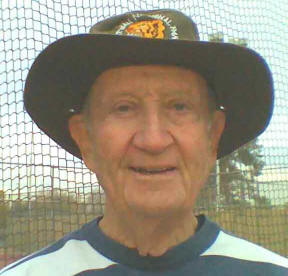 Dan Abrams
Dan Abrams
|
Barrow Center for Transitional Neuro-Rehabilitation (CTN) is a part of Barrow Neurological Institute and is where Mike spent 5 months in neurological and physical rehab, following his Traumatic Brain Injury (TBI) in 1988.
When he was there, it was called "The Adult Day Hospital"
Of the various programs offered there, Mike was in the "Work Reentry" program, because he could more or less function at home activities. Even so, his physical therapy was intense and painful (see Heather Simpson), and he became very "competitive" in the neurological lessons. Understanding and acceptance of his presence there were crucial to Mike's return to work at Honeywell-Bull.
Vern Anders - Mike has known Vern and his wife, Diane, for as long as he's lived in Phoenix. Vern was one of the original WWMCCS developers Mike that worked with, starting with the "outpost" site separated from the main Honeywell plant, through the end of the project and move back to the main facility. He also stayed with the small group that provided support for the project, as well as those who enhanced it to become a series of commercial products (MDQS, QRP/PLP) that followed it.
When further changes within Honeywell - and later BULL HN - occurred, Vern was one of the few who remained with the small group to which Mike moved. This group, eventually named Testing and Test Support (T&TS), was where Mike concluded his Honeywell/BULL career of 28 years, and Vern was there throughout. Vern and Diane have also been steadfast participants in an annual "Holiday Party Reunion" for the group, which occurs every February and includes a frivolous "white elephant" gift exchange that all attendees enjoy.
|
Ann-Margaret (Olsson) - the movie star/Las Vegas entertainer lived in Wilmette when Mike and his family lived there. Mike and his friend David Porter met her on the tennis court, when at age 15 she expressed an interest in learning tennis. They showed her some of the basics of the game, but she didn't continue the effort to learn it for long. Ann Margaret Olsson went to New Trier High School in Winnetka, where she exhibited her singing talent on her way to being discovered when she attended Northwestern University in Evanston. She has most certainly forgotten those days on the tennis court, as well as meeting Mike. |
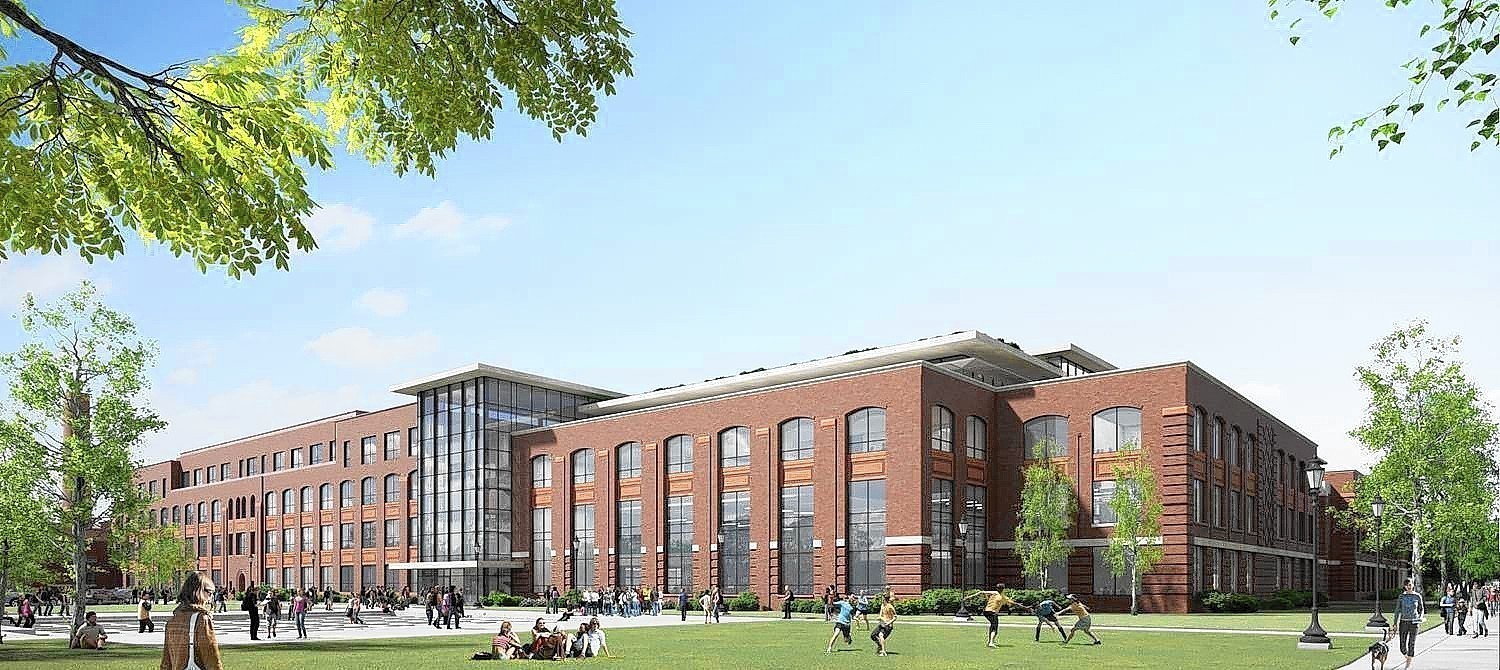 New Trier High School
New Trier High School
|
John H. Armer was a well-known Interior Designer and Antiques dealer who ran a successful Interior Design and consulting company for many years in Scottsdale, Arizona. Libby was fortunate to land an intern job with John and his partner, Bill Coleman, shortly after graduating from Scottsdale Community College's Interior Design program. Whereas she had previously had a short intern job, it was at Armer's that she could exercise her skills and knowledge in an environment where she met customers and worked with "design products" in meaningful ways. Libby's job was to design table settings with the high-end antique dinnerware, glassware and silverware on the 6 antique tables that were in the store. That store was famous for these tables and their beautiful setups, and Libby was able to do all the design work for this part of the store: John and Bill soon gave her full authority over this part of the store, and Libby met many of their important clients as she did this work.
Libby (and Mike) remained friends with John and Bill through many "designer" social activities she became part of, even sfter the store closed and John became ill and retired. An extraordinary event took place a few years after Libby and Mike moved to their Biltmore home: she ran into Bill outside their house and learned he had just moved in 2 doors away! John had recently passed away, and Bill happened to rent the nearby house. Libby, Bill and Mike have rekindled their friendship and see each other often...all due to John Armer.
Larry & Joanne Backs - are friends of Mike and Libby from Phoenix. Their connections to Mike and Libby are unique: Joanne worked with Mike at Bull, and Larry is an interior design associate of Libby's. At one time, Mike knew Joanne and Libby knew Larry separately, but both couples attended an ASID social event and then realized the "connections". The two couples have since maintained a social relationship, past when Mike and Joanne each left Bull, and beyond Larry's retirement from active design work.
The Backs travel a lot, all over the world, and Mike and Libby joined them once on a cruise to the Canary Islands, in November of 2002. Before the Copelands took their first cruise (26 years ago, to Hawaii), Larry and Joanne provided a lot of "cruise info" that helped make the adventure easy and fun - some things they would have had to learn in "real time". Mike and Libby regard that first cruise as their favorite: they had lots of fun!
Tom Bader - also from Chicago, Tom was one of first WWMCCS team members Mike met and worked with after arriving in Phoenix. The connection to Chicago helped Mike become integrated into Phoenix life (there was a lot to absorb), and Mike and Libby had some social evenings with Tom and his wife, Shirley. After the WWMCCS work was over, Tom and others went back to the main plant, but new work and projects caused them to drift apart as groups and projects in this large company were always changing. Mike doesn't know when Tom left Honeywell...
Years later, when Mike and Libby were at an artist's party (part of Libby's career), they ran into Shirley Bader. Tom had died, and Shirley had remarried...to the artist! They knew him (John Dawson), and learning both Tom's passing and Shirley's new marriage was doubly surprising. Mike and Libby were invited to dinner at the Dawsons' place and had an enjoyable evening. Mike also happened to encounter Shirley at the airport, when Shirley was checking out an exhibit of John's there. Sometimes it's a small world...
Bill & Dayle Bakley - were key members of the Raceplace crew that Rob Wallack assembled to travel to and process Coors Light Duathlon and Bud Light Triathlon races. One of Rob's great strengths was to find people who had various talents and could work well together. Dayle was an incredible typist whose speed and accuracy to construct the data bases was all-important, and Bill's background as an olympic calibre athlete helped in many other ways.
The stress and conditions of these locations and events were enormous, but Bill and Dayle's efforts and good nature made the work go well in almost every situation. However, after about 6 years of high-pressure travel and work, Dayle developed liver cancer and passed away. The memorial service Bill and her daughters put on was poignant, moving...and funny: members of the crew spoke lovingly and with humor about how Dayle impacted their lives during these special years.
Barrow Neurological Institute - see Adult Day Hospital
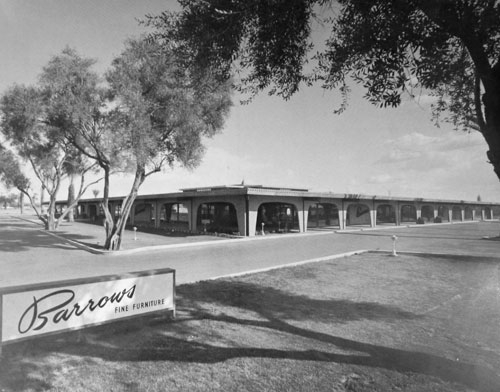 Barrows Furniture in Phoenix, mid-1960s
Barrows Furniture in Phoenix, mid-1960s
|
Barrows Furniture - was a popular fine furniture store located in Phoenix from the 1960s through the late 1990s. There were other store locations in Arizona, as well as Florida. The Phoenix stores were owned by Don Kauffman, who was the last of a family that owned the chain. Libby's first (paid) job in her Interior Design career was at Barrows Furniture. She was hired as a personal assistant to a well-known Interior Designer named Carol Minchew, although she first was a "general assistant" at the store for a short time. Working for 1½ years with Carol was very important, as Libby learned about the actual career work, as well as met numerous clients in the store and at their homes. She was then "promoted" to be a salesperson on ths store floor, where for another 1½ years Libby gained valuable sales experience - an important aspect of being a designer. Libby would have to sell store furniture along with her design services. Barrow's designer training program was an extraordinary introduction to the real world of Interior Design, and Libby absorbed all she could until she took her place as a Designer in Barrow's Design Studio. |
|
Mark Barry is one of the younger tennis players in the Phoenix Tennis Center's "Drop In" group. A crafty and steady left-handed player, his slice forehand and wicked "lefty" serve are fearsome weapons. He's a semi-retired X-Ray technician who works for the Arizona Cardinals with the on-the-field medical staff at local games. Mark also is an accomplished folk singer, and members of the Drop-In group have been to some of his performances. |
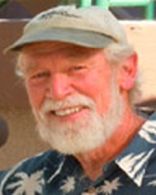 Mark Barry
Mark Barry
|
Harvey Beller - is a long-time friend of Mike, from the days where Mike was running and working with running/endurance sports. Harvey is the director of The New Time Phoenix 10K Race, one of the oldest and largest of the local running events. For a number of years, Mike supported Harvey with his event, helping to manage the Start and Finish lines. Harvey and his Phoenix 10K have become important fixtures in the local racing scene.
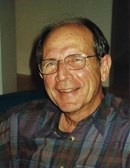 Neal Berger
Neal Berger
|
Neal Berger - Dr. Neal Berger played multiple roles in Mike and Libby's lives in Phoenix. They first met him at Top Seed Tennis Club, where he and his wife, Lene, were also charter members. The Copelands discovered that the Bergers were nearby neighbors. Furthermore, Neal was a peditrician, which fit nicely into their needs for a doctor for their twins, Regan and Becky. Neal was definitely a "Renaissance man", being a talented piano player, good athlete, and having many interests. Neal was an adept tennis player, and he blended into a small group of players that Mike and Myron Shapiro formed. This relationship also produced a mixed-doubles group at the club that Mike and libby joined. Neal was, among other things, an organizer. Relationships grew, and the Copelands, Bergers, and Shapiros saw each other socially and went together on short vacations to Garland's Oak Creek Lodge and the Wickenburg Inn. Mike and libby's social lives often merged with the Bergers and Shapiros. Neal teamed up with Mike to represent Top Seed Tennis Club against other clubs in Phoenix. They discovered many opponent clubs whose players were older, experienced, and crafty; Top Seed's teams didn't fare too well against them. |
Austin Berkey - in the late '60s, Mike worked with the computer user groups in various capacities, leading to an involvement with a national organization that sponsored blind computer programmers. This issue intrigued Mike, as he, though not blind, had empathy for opportunities for non-mainstream programmer development (being one himself). After discussion with FEEC management, Mike visited this organization's home in St. Louis to learn more. He felt that there was a potential "fit" for one of their students, and he went back to Chicago to explore ways FEEC's computer systems could work with a blind employee.
A key issue was if/how Braille documentation for an employee could be produced. Computer programmers use a lot of printed material (source listings, program dumps, printed output, etc.) in their work, and everything would have to be converted to Braille for a sight-handicapped employee. Mike and his team came up with an idea of stretching rubber electrical tape across the printer head of their mainframe printers and converting each character to a 9 matrix of dots. This worked sufficiently well that, although very slow, it seemed to work (although consuming 3 times the normal amount of paper for any listing or document). They started looking for a suitable employee candidate.
Enter Austin Berkey, a young man from Indiana who had the computer programming career development above. He was interviewed and hired by Mike's managers, and he was assigned to work in the group Mike managed - he was essentually Mike's employee. Mike helped him find aa apartment in Evanston, not far from where he and libby lived. It was important the Mike could help Austin find his way to and from FEEC's office in the Merchandise Mart in downtown Chicago, and that Mike be nearby if there was an emergency: Austin had no friends or family in the Chicago area. Obviously, this took some time and effort to work out.
Austin was a remarkable computer programmer: he was smart and had an incredible memory (he memorized every program he wrote, even knowing details of memory layout and strutcture). Once he read the initial data (in Braille), he had it in his brain for the time he worked on it! He didn't need much "Braille printing".
He had another handicap, though. He was almost totally deaf. Austin was 85% neurally deaf, something which was progressive and not overcome with current day technologies. It was this handicap that ultimately led to Austin's failing at the job...
A well-intentioned decision to "mainstream" Austin's work in the department was proven wrong. Placing him in the "bullpen" with other programmers exposed the problem of his hearing difficulties, since what little he could hear was the normal language of others' frustrations with various problems they were having in their work. Occasional (loud) comments (e.g. "Damn!", "Oops!", "Oh, boy!", etc.) were about the only things Austin during his time there, and he started to imagine they were directed at him! He knew he was different, and having never been in a work environment to hear some normal loud activities preyed on his own insecurities, and his imagination turned malevolent.
Mike was his manager, and Austin came to him with this concern. Here, Mike's inexperience with personal problems failed to solve the problem, for, even though he assured Austin that the loud comments were "normal" and not at all directed at Austin. Attempting to get the other programmers to "cool it" with their normal comments didn't work, either. Eventually Austin's paranoia resulted in an "emotional breakdown" and he had to leave FEEC.
Austin Berkey was a talented and productive computer programmer who, even with the best of plans and intentions, could not adapt to a normal work environment, due to his many handicaps. To this day, Mike regrets how the experience turned out, wondering what, if anything, he or the company could have done to make it a success. He doesn't know what happened to Austin...
Jim & Jean Blair - are two people Mike worked with an Honeywell-Bull in Phoenix. What's notable about them is how Mike interacted with them over a period of years, because it exemplified several aspects of Mike's work and leisure life there. First, one of Mike's occasional duties at work was to interview potential new hires, because his boss (Ken Roberts) didn't like to get into the technical details of programming knowledge. One such interviewee was a new college graduate named Jean Kurs. Mike felt that she would be a good candidate, and she was hired to join his team at Honeywell. (He aldo helped her find an apartment location convenient to work.)
After a few years, Jean developed a romantic interest with a man in another department: one Jim Blair, eventually marrying him. Jim had a connection to Mike, too, as he was one of a group of runners who ran at lunchtime. Jean also joined this group and became a good runner herself. Many of this group participated in local charity runs, and the team did quite well in a popular corporate race, winning the team competition several years.
(Of additional interest is that Mike's scoring software was used to score this and other valley races, and his involvement with the Honeywell team wasn't well known...)
Adelaide Brennan (nèe Payne) - Libby's sister, was 2 years older than Libby. She was a star student growing up in Owensboro, and married a young preacher there at the age of 17. That marriage produced 4 children (Bobby, Marcia, Joannie and Edward), and Libby has always been close to her nephews and nieces over the years. Mostly a stay-at-home mom, Adelaide went to college and earned a doctorate in English. The marriage broke up after many years, and she became a professor at a local college in New Orleans - eventually becoming the head of her department there.
After the divorce, Adelaide developed a relationship with another English professor who taught at Tulane University in New Orleans, Steve Brennan. This lasted many years, even though Steve took another teaching job at LSU, in Baton Rouge. The distance didn't affect their relationship, as they eventually married and moved to Shreveport, Louisiana for a short time before moving back to New Orleans to be close to her children. Libby and Mike attended their wedding, which was held during Mardi Gras because Adelaide knew her kids liked it so much.
Over time, her eldest son, Bobby, developed AIDS and died in New Orleans. Her youngest daughter, Joannie, developed Lupis and had her marriage break up. Her other daughter, Marcia, moved to Colorado where her marriage break apart. However, her eldest son, Edward, became an important aide to several federal departments in Washington, D.C., and remains there with his family. Late in her life, she developed bone cancer in her jaw, which badly impacted her speech and overall health. Her husband, Steve, became diabetic and passed away suddenly...even though he was much younger.
It must be said that Adelaide's life had more "downs" than "ups", but she maintained a positive and generous attitude throughout her life - which ended in 2018.
Tom & Diane Brennan - are long-time Phoenix friends of Mike and Libby. They were also charter members of Top Seed Tennis Club, where they met Mike and Libby. Along with some others mentioned here, Tom and Diane became members of a "mixed doubles" tennis/social group that formed at Top Seed. Many years after the "tennis thing" ended, the couples remain friends, with occasional social interactions.
Charlotte Brooks - was one of the first people Libby met upon moving to Phoenix. This occurred when Libby, becoming ill, visited a doctor who said he was also new in town. They had a short conversation about this, and he admittted his wife was struggling with the change and gave Libby their phone number; She called Charlotte and set up a contact which led to friendship with the 2 couples.
After some time, Charlotte divorced Dick, her husband, and through some strange events married a friend of Mike and Libby's, resulting to an even longer social firendship. Dr. Dick Brooks married a local woman and eventually moved to New Hampshire.
|
Bud Light Triathlon Series - was a series of triathlons (swim/bike/run) that Raceplace timed from 1991-1993. Following its success with the Coors Light Duathlon Series, Raceplace won the processing contract for this prestigious series. It was considerably more work than the Coors Light series, and it was often that events for both were held on same weekends, but in different cities. More crew members were added, but certain critical functions (such as Mike's computer/software knowledge) were shortchanged. "Quality" suffered, and after 3 years Raceplace stopped doing this work. A memorable BLTS race was held in Chicago, on the Lake Michigan lakefront. That was one occasion where Libby was able to join Mike on the crew, but the conditions that day were extreme: a tornado hit the area, and the swim had to be canceled. Much of the equipment (tents, computers, etc.) was damaged. It was an awful experience for all (athletes, spectators, and crew), but all survived. |
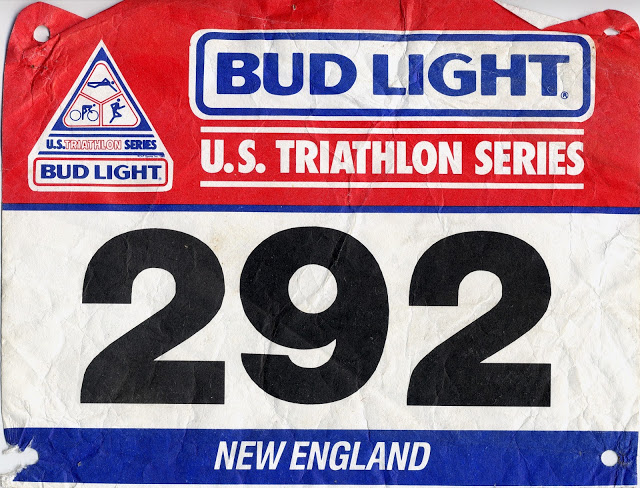 Bud Light Triathlon Series
Bud Light Triathlon Series
|
John & Judie Carpenter - one of the first men Mike met when he started his PHX Navigator volunteer activity was John Carpenter. An outgoing and personable guy, John helped Mike get started in the airport duties, but he also had an interest in playing tennis. He mentioned that he played with a group of older guys, at a location not far from where Mike lived. Mike mentally compared his skills to John's and soon showed up there to see if he could play. It was the start of an activity Mike has since followed for many years - the 20-odd participants would usually go to a local coffee place for after-play refreshments and talk.
It's because of John's willingness to share his interest that Mike has developed long-term relationships with a very compatible groups of men for both tennis and casual socil friendships.
Not long after their meeting and sharing common interests, Mike and Libby saw John and his wife, Judie, socially - dinner in restaurants and other activities. This friendship became especially important when Becky and Regan planned a surprise 50th Wedding Anniversary party, which the Carpenter's hosted.
Ron Cimino - was one of the first co-workers Mike met when he joined Honeywell in Phoenix. Ron and Mike had several things in common: they lived in nearby neighborhoods; their children were of similar ages; and Ron was also from Chicago. Because both were working on the WWMCCS system and had long hours, they carpooled frequently. Mike and Libby had some social interactions with Ron and his wife, Ruth.
After the WWMCCS project was mostly complete, the team dispersed to various other Honeywell projects, and although they all worked in the same building (the main Honeywell plant in Deer Valley), Ron and MNike lost touch. Ron accepted a transfer to a Marketing job in Denver, and the friendship died.
Joyce Clarke - Joyce has been Mike and Libby's across-the-street neighbor since 2012, although they didn't know her until 2015 or so. This odd situation was due to Joyce's living most of the year in Canada: she and her husband, Gordon, alternated living between Canada and Phoenx (as many Phoencians do), but his failing health never permitted traveling to Phoenix during the Copeland's first years in their Biltmore home. Mike and Libby would occasionally see people coming in and out of the house, but if asked always told they were "visiting" the place for a short time.
Eventually, they met a woman who said she owned the house and was moving in. This was Joyce Clarke, who was permantly moving from Canada, as her husband had passed away. Another "visitor couple" arrived around then; this was Joyce's stepson and his wife, Mike and Kathy Clarke. Libby and Mike got to know them, too, and they said they were looking to purchase a house nearby, so they could be near Joyce (see below).
Joyce has lived across the street ever since, and has become a good neightbor to have nearby.
Mike & Kathy Clarke - as stated above, Joyce Clarke's step-son decided to purchase a home near her, and it so happened that the house next to Mike and Libby came up for sale about that time. That house was owned by a woman who the Copeland rarely saw and with whom had an uneasy, "hands off" relationship with - not a good neighbor at all. Mike and Kathy Clarke wanted a house as a second home for the winter months, and this house next to Mike and Libby turned out to be it. Suddenly, Mike and libby had "replacement neighbors" they already knew and would be a positive change!
The Clarkes were at the time just visiting Joyce and needed to back (to New York State) and needed someone to take charge of making their new home "theirs". Interestingly, they saw Libby's work next door, and hired her to "do the place" in their absence. It was a rather simple job for Libby, as there was no remodelling needed and primarily furniture and accessories: Libby could be on hand to accept deliveries and organize the placement of items she ordered.
So it was that when the Clarkes cameto their new winter home, they walked into a completely furnished place as ready for them as a hotel would have been, complete with sheets, towels and all they needed. They were pleased, and the Copelands had "instant neighbors". It's been several years now, and the Clarkes come and go, and while they're in New York for half the year, Mike watches over their house, a situation that works for all. Mike also provides a "personal airport Uber" service for them (Joyce Clarke, too), because he's very familiar with how to get to the airport, as well as having free parking when picking them up...
Clissold Publishing - was the firm in Chicago that Libby worked for when Mike met her. She was Executive Secretary to Frank Winters, the company's Vice President. A note of historical interest: In the 1960's, cigarette smoking was common and accepted in work environments. Then, Libby was a regular smoker, and she was able to smoke at her desk outside her boss's office. Such behavior is impossible to imagine now...
Buckner Coe - was the senior minister at the First Congregational Church of Wilmette at the time Mike met and fell in love with Libby. Since Mike and his family had been members of this church (and knew Dr. Coe), it was the obvious choice for their wedding, and for him to perform the ceremony. Mike and Libby attended some pre-marriage counseling with him, and on May 23, 1964 they were married there by Buckner Coe.
(Of minor coincidental interest, he married Mike's long-time friend, Karen Swanson, married Herbert Berry the previous December. Was there something "special" about Buckner Coe and/or that church that yielded enduring marriages such as the Copeland's and Berry's (which have both exceeded 50 years)?...)
Bill Coleman - Libby has known Bill for many years, starting in 1979 when she started an Interior Design internship at John H. Armer. She worked closely with Bill in her work, and she and Mike saw Bill and John at various social events that were part of her career. Bill was especially attentive after Mike's bicycle accident/head injury, and Mike remembers Bill's concern.
Bill's relationship with John Armer lasted a remarkable 45 years, and Libby tried to keep up with John's health decline during the last years of his life - a somewhat difficult task if she didn't see Bill at gatherings or events. Then, in 2015 she ran into Bill outside her home - learning that he had moved into their neighborhood, 2 doors down the street! This was great news for both Libby and Mike, but he informed them John was very ill with dementia and was in a facility. John has since passed, but Bill remains nearby, becoming an integral part of their neighborhood (very much because be brought with him his wonderful dog, Buster, whom everyone knows and loves).
|
Coors Light Duathlon Series (CLDS) - was Raceplace's first major timing & scoring contract - in 1988; (For Rob Wallack, it was a major risk, because the dependence on Mike's new scoring software was critical...and he had just incurred the head injury) The first event was in San Diego, and Rob had to gather a crew that could travel on weekends. It was at this event that Rob and the crew discovered the challenges of working with local volunteers: organizing; instructing; maintaining focus, etc. Other issues, such as dealing with weather and environmental conditions were situations the crew would face in most venues. It's a credit to Rob that his talent for employing associates would would (and could) rise to virtually any challenge, to produce quality results each and every time. Also, all members of the crew got along incredibly well in dealing with the many unusual hardships. Ultimately, this series and the quality of the work produced got national attention, which led to more out of town work (Bud Light Triathlon; America's Finest City Half Marathon; Komen Race for the Cure, and others), which continues to this day. Mike's contributions were exclusively on the data processing side, but no less important was the way the whole team adapted to whatever situations arose in the many cities they visited. However, no amount of experience, talent or hard work could overcome the issues produced in the several "mountain bike" series Raceplace took on. Those events were wretchedly produced, impossible to control, and favoured by participants of demented and belligerent personalities. After a few years of this craziness, Raceplace left that business... |
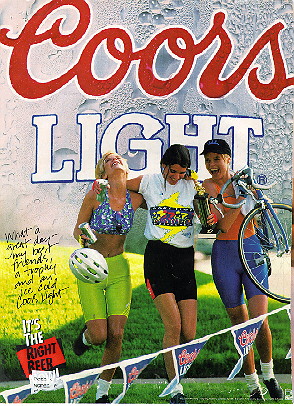 Coors Light Duathlon Series
Coors Light Duathlon Series
|
Despite this restrictive upbringing, Elizabeth was an extraordinarily successful student and managed to graduate in the top of her high school class (Senn High School, in Chicago). Her academic achievements won her a full scholarship to the famed The Pasadena Playhouse, where she met Maurice Copeland, an upperclassman there. They began a romantic relationship, which was clandestine because of a strict non-traternazation policy within the student body. Maurice graduated (he was 3 years older), but he stayed there, teaching some classes (fencing, among others), until she graduated and they could get engaged and married. Their son, Michael, was born there, before Maurice could establish a career in Radio. They moved to Chicago when he got his first job (in Radio, on "The Answer Man"), spending most of their lives there.
|
Maurice D. Copeland - Mike's father had a long and successful career in radio, television, TV commercials, films, and theater, spanning more than 40 years. His first job in radio was in Chicago, where he and his family spent most of their lives. That radio show was called "The Answer Man", which had a "question/answer" format: Maurice would read questions submitted by listeners, and the show's host star, one Albert Mitchell, would provide interesting and factual answers. The show aired for 19 years. He met Elizabeth when both attending The Pasadena Playhouse, a well-known theater arts college in California. They fell in love there, but existing "non-fraternzation rules" in the school prevented them from openenly dating: they had to both graduate before formerly getting engaged and marrying. Mike was born there, and they moved to Chicago, where Maurice's first job (in Radio) was waiting. When they arrived in Chicago and lived in a small apartment, the entertainment industry there was in its infancy. World War II was looming, but radio was vital in communicating news and entertainment. Maurice had roles in over 10,000 radio shows, such as "Sky King", "Tom Mix", "Jack Armstrong", "Ma Perkins", "Captain Midnight", "Curtain Time", "Author's Playhouse", "Destination Freedom", "We Came this Way", "The Hall of Fansasy", "The Chicago Theater of the Air" and others. For those interested, here's a recorded conversation with 3 vintage radio actors, one being Maurice Copeland. Most notable to his family was his role in the pioneering of early TV. Chicago became active with the growth of live television in the early 1950s, and Maurice had the lead role in "Hawkins Falls", a TV series that ran from 1953-1955. At the same time, he starred in another series: "Those Endearing Young Charms", a show that ran in 1952. He had significant film credits, as well. |
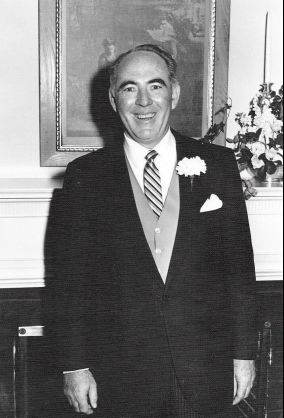 Maurice Copeland
Maurice Copeland
|
Rebecca (Becky) Copeland - tbd
Gloria Daniels - worked for Honeywell-Bull during the time when Mike was recovering from his bike accident/head injury. She became his boss, and even though she had also suffered a past head injury, she wasn't able to help him enough to avoid being transferred from his job to a lower-level position there...in software testing. No particular blame goes to her, because the 7 year effort for him to "regain normalcy" was beyond the sort of support the company was equipped to offer. Mike languished at Honeywell-Bull for 12 years, when the downward spiral of the company's business forced a subsequent manager (Andrew Hertnecky) to lay him off.
Mary Therese Dixon - was a neighbor down the block from Mike & Libby's first home in Phoenix. She and her husband, Hank (she referred to him as "Dick", though), had two daughters and a son who became friends of Regan and Becky...friendships which exist today. Hank was an avid private pilot, but he died tragically in a plane crash, leaving the Dixon family - and the neighborhood - in shock.
Ironically, Mary Therese got a job with Honeywell, at the plant where Mike worked. Their jobs weren't connected, but they bumped into each other on occasion. She developed some health problems, though, and had to quit. Still, although many domicile moves happened for all, the friendship with "MT" has endured, and she is part of Libby's Monday morning coffee group - so Libby sees her frequently. Mary Therese's health had gotten worse over time.
Ken Dohrman - tbd ("Ski Nebraska", Cartridge in a Bare Tree)
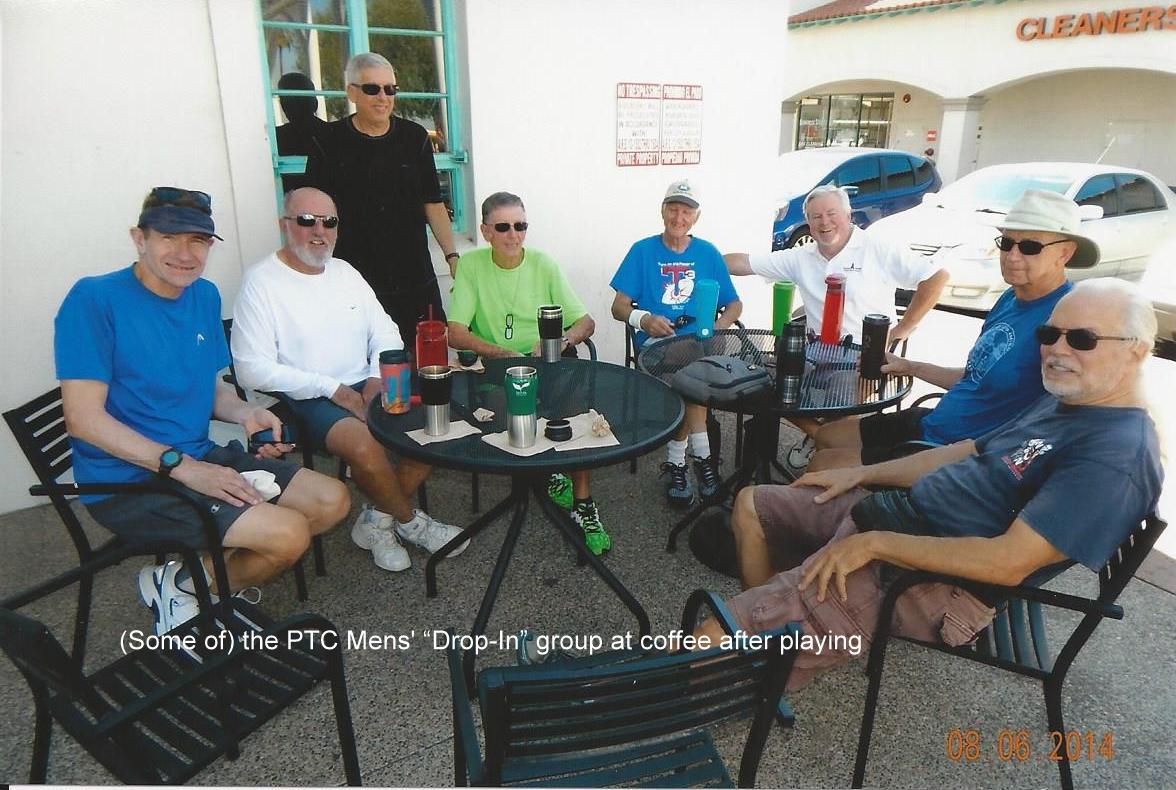 "Drop Ins" at coffee
"Drop Ins" at coffee
|
"The Drop-Ins" - is a group of (seasoned*) men who play tennis at the Phoenix Tennis Center and then go to coffee at Einstein's Bagels three times a week. Mike has been playing (and socializing) with these guys since 2010, an activity that has become an important part of his life. * The ages of these guys range from 65 to mid-80s. |
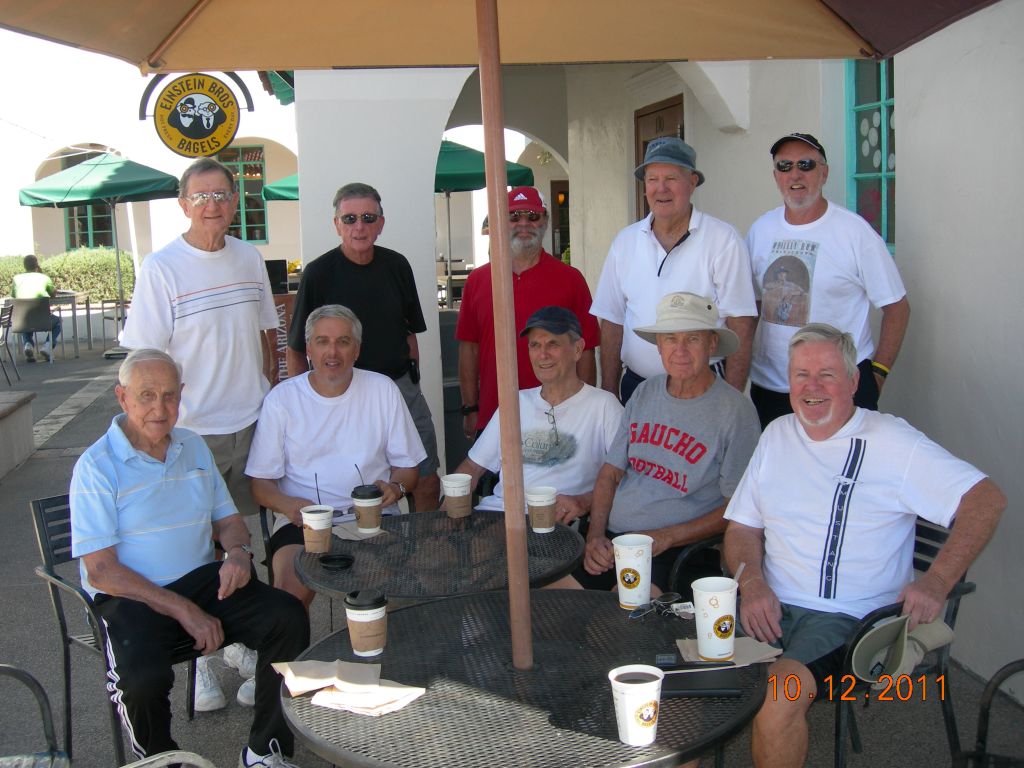 More "Drop Ins"
More "Drop Ins"
|
Charlie Durang is an old friend from high school in Libertyville. He was one of a small group of "nerds" that Mike hung around with, and he was also editor of the school paper, Drops of Ink. Charlie played several sports (baseball and basketball), but not well enough to make high school teams. Even so, he was known and accepted by all the students there. He, Mike, and Tony Cresswell got together and produced the infamous "Fenwick Knurd Radio Show" that, because of the respect Charlie had with school administration, was played once a week over the school's PA system before classes started. Permitting this foolishness was a tribute to the achool's principal, C. Allen Fort.
Bud Ebert - was an English teacher in Mike's Libertyville high school; he became the school's tennis coach when a team was formed. He had no athletic background, nor did he have any experience in the sport. In effect, Mr. Ebert was only a team manager, arranging practices (in the school gym, as the school had no tennis courts), driving the team to matches, and acquiring uniform shirts for the players.
However, he was the beneficiary of (1) a team of athletic players and (2) a school conference that was also completely new to the sport. There wasn't much competition in the league, and in their 2nd year the LFHS team won the conference championship. The team qualified to play in the regional tournament, where the met a team from Lake Forest that had players raised around country clubs...a different story. That was a different level of competition, and their success was curtailed.
Even so, the experience gave Mike a "career goal", as he entered college planning to earn a degree in English, with a plan to teach high school English and become a tennis coach. Somewhat mundane expectations that disappeared when he couldn't afford even 2 years of college, ultimately leading to his career in computer programming.
Signi Falk - had an enormous impact on Mike's college experience at Coe College. She was the English Department chairperson at the time Mike attended Coe, and it was a well-known fact that she disliked male athletes - making it more than difficult for them to pass her courses. In effect, Signi Falk became Mike's personal "bogey", when he became a declared English major and had to take some of her classes.
Mike learned of this academic obsticle when he joined a fraternity (Lambda Chi Alpha); when he signed up for one of her classes in the 2nd semester of his sophomore year, he hid the fact that he was an "athlete". For a while, it wasn't difficult (tennis being an obscure sport at Coe)...until he was forced to play a match that took him away from the campus and had to miss a class. Until then, Mike had been earning good grades (B, B+), but as soon as he needed an excused absence, every assignment and test grace became "F". The "legend" was true...
That semester was when Mike left school because of financial woes, but the "return door was slammed shut" when he received a status report from the college: he was passing all classes except that English class: he would have been given a "WF" (Would Fail) grade. If he were to return to Coe, he would have needed to change his major and start over.
Bob & Pam Farrer - are among the various couples that have known Mike and Libby since 1978, when they, too, became charter members of Top Seed Tennis Club. As year pass, and tennis has no part in their lives today, Mike and Libby see the Farrers much less often than when the couples were active tennis players.
Field Enterprises Educational Corporation (FEEC) - was the company where Mike got his first full-time job - in the stockroom - in 1960. He stayed there for only a few months, when he secured a transfer into the company's System Departrment, where the company's computer programming was done. Mike didn't have any idea what was done there, but he was happy to get out of the stockroom.
The company's business was the production and sales of World Book Encyclopedia, and the time the most popular and affordable encyclopedia in the world. Primarily sold to families and libraries by part time sales people who were mostly school teachers and librarians, World Book was targeted at families with kids in school. A companion product, Childcraft, was a "junior encyclopedia" meant for pre-school kids and their families. Both were extremely popular in the United States, and FEEC needed a lot of computing power to process the sales and incoming monthly payments ($6 per month). The well known Encyclopedia Britannica wasn't a real competitor for World Book, as it focused on college student and professional research usage.
Mike worked at FEEC for 13 years, programming several types of mainframe computers, to become the company's Manager of Technical Evaluation - which led to many trips to Phoenix and eventual move there in 1973.
Fiesta Bowl Marathon - was a major local running race that was also a popular qualifying event for the Boston Marathon. It was held consecutively from 1971-1984. Mike had started his "running period" in 1977, following a period where his tennis game seemed to deteriorate (he was losing matches against guys he used to and should have handily beat). He was at that time, very competitive and focused on his tennis...not a particularly good thing for his life and family.
This period wasn't really important in his and Libby's life, but where it led was...
After he had run (and completed) this arduous event a couple of times, he learned that Honeywell Phoenix was getting involved with the Honeywell Boston division in a cooperative effort to time and score the Fiesta Bowl Marathon. Since computers and software were involved, Mike joined the team being formed to host the "Boston operation" and do the processing for the local event. Mike got to know the 2 Boston programmers well, and he learned the basic technical concepts of their system. Through several years and many activities, this ultimately lead to Mike's all-consuming involvement with Raceplace Events, Rob Wallack and the timing and scoring business.
Maureen Files (nèe Copeland) - tbd
Steve Finkelstein - has been a "fixture" in the Phoenix running scene for many years. Starting with an untold number of races he's participated in, he has been involved with The Arizona Road Racers and results documentation for various national publications. Steve is a particularly nice guy, and although not a competitive runner himself, he'll be found at events and social activities associated with running.
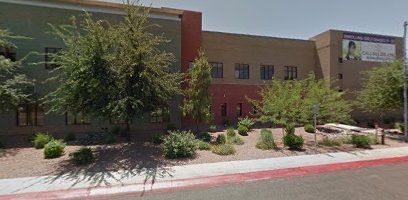 Florence Crittenton
Florence Crittenton
|
Florence Crittenton - after retiring from Blue Cross/Blue Shield in 2006, Mike was "at loose ends", to say the least.
He was clinically depressed, feeling worthless and out of place there; he stayed only long enough (6 years) to qualify for a small pension.
Initially, he had useful and challenging work, but when the project was completed, he was assigned maintenance of old systems he didn't understand.
BCBS had no procedures for documenting their software systems, seeming to depend on the knowledge and experience of their programmers - something Mike couldn't do.
He had nothing at all to do after leaving BCBS, except playing some tennis at the country club Libby had joined. He had friends at the club, though, and he asked around for ideas: parttime work, volunteerism, whatever. One such friend, Gerry Murphy, had connections to an organization that helped troubled girls, called Florence Crittenton (FloCrit). He said they could probably use some help with their computers, although he didn't know enough to see if Mike's skills were a fit. Gerry took Mike to introduce him to the management, and the organization did indeed need some support - mostly in software development areas in which he could help. |
After some background screening (FloCrit housed young girls), Mike started going there several days a week, developing new much-needed reports from FloCrit's databases, as well as installing PCs and software in the school's classrooms. It was satisfying work for Mike (more so than BCBS), lasting for about 3 years. At that point, there wasn't anything much for Mike to do there as a volunteer, so he "retired" from that, too. The activity did in fact help his depression, so it was beneficial to all.
Flunk Day - a tradition at Coe College, where the Student Council President declares a day in the Spring where all students skip classes and party. It was on this occasion in his Freshman year that Mike met Janet White, which led to a serious romantic relationship that lasted until he left school.
C. Allen Fort - was Principal of Libertyville-Fremont High School during the years Mike and Maureen attended. He was, in all regards, a "good guy": fair, lenient, and sometimes willing to "bend the rules" in favor of the students. He was well-liked and respected.
Bob & Stephanie Foster - are some of Mike and Libby's Garland's Lodge friends. This friendship has lasted for many years and extends to social friendships during the year. Bob has also been Mike's dentist prior to his retirement.
Lou Fraccola - was one of Mike's various managers during his Honeywell-Bull years. Mike was working for Lou when he developed his "dump analyser" software and was asked to teach a class to technical support people in Paris, France. He made this trip with Libby, and Lou and his wife, Marie, happened to be there at the time. Having a friend there in that strange environment was very comforting to Mike, who was having lots of anxiety just being there. For Mike, this trip could have been much more stressful without meeting the Fraccolas there...
Mavis Gal - is a special friendship from the airport, where Mike volunteers as a Navigator. Mavis managed the Navgators there, handling the shift assignments and overseeing the staff of support employees in the offfice. She also supervised the Navigator training program, called "mentoring", where he did extra work. That mentoring process has been important to Mike, and Mavis was very supportive with his efforts to keep the volunteer program strong and effective.
Over time, the Navigator program experienced changes in upper management, and one such change greatly impacted Mavis. For reasons never explained, Mavis's job was changed to only manage the training activities, and she was moved out of the main office to a dark and lonely area in a smaller terminal at the airport. It was obvious that her importance to the overall program was being diminished, and her contact was only with the new Navigators and their mentors.manage Mike often saw her in that capacity, but most others didn't see her at all. Most "old timers" like himself saw this as a loss to the program, and her absence in other aspects has been felt. Ultimately, Mavis was fired with no explanation by the company hired to oversee the whole program, and she dropped out of sight...
Because Mike takes the Navigator program very seriously, he feels her absence greatly. He's had no contact with her since then, but has heard she found another job and is okay. Mavis had a unique attachment to the Navigator program and its people. This was especially noted when any Navigator died: she went to every funeral and took each as a personal loss.
Pat Gallagher - was Mike's last boss at Field Enterprises Educational Corporation. They had traveled on business together and got along well. It was very difficult for Mike to tell Pat he was leaving, especially since Pat had "guaranteed" the down payment loan Mike and Libby used to buy their first house.
Pat was an fascinating guy, having been an Air Force pilot in his earlier days, and he was fun and volatile - due, no doubt, to his Irish heritage. He was a wonderful boss, who gave Mike much support and opportunity during their years working together...
In fact, Pat was instramental in Mike and Libby's purchase of their first house: it was his personal assurance (to the bank officer working their mortgage loan) that Mike's job growth at FEEC would warrant an unsecured loan to cover the down payment on that home. (This was many years ago, when such verbal guarantees were honored by banks...something currently unheardof.)
Garland's Oak Creek Lodge - was a personal tradition for Mike and Libby: they went for special "getaway weekends" for over 30 consecutive years. Garland's Lodge was located in Oak Creek Canyon, north of Sedona, Arizona, and had been in existance since 1972. A few years ago, this wonderful place was purchased by a couple who had stayed there many times and renamed it to Orchard Canyon Lodge. Mike and Libby's group tried it and found it changed, and they haven't been back since.
Ken Geiser - represented GE and Honeywell in the years Field Enterprises was using their computers, as lead vendor representative (not sales). Mike was his frequent contact, and when Mike got involved with the GE and Honeywell User Groups (GESUA & HLSUA), they often worked closely to set up and run the yearly meetings. Mike was president of the GE Users' group at one time.
The two worked together for so long, Mike approached Ken in 1970 about coming to work for GE. Ken knew all the important people at GE, but GE had just sold their large scale computer business to Honeywell: it was the wrong time for the company to be hiring from a key customer! Also, the new Honeywell operation in Phoenix was laying off people (and certainly not hiring), as they tried to make the business viable. Mike and Ken kept up the effort, and 3 years later Honeywell hired Mike to come to Phoenix and develop software. Ken Geiser was especially helpful in Mike's efforts to move to and work in Phoenix.
Granada Park - is a Phoenix City park with a number of facilities that Mike has "connections" with. Many years ago, when Mike was running and training for distance races, he would run to Granada Park (and beyound), where he would stop and drink water from a faucet that fed a horse trough there. The park is located at a distance where a drink of water was important, and many Phoenix runners used that water faucet.
More importantly, Granada Park has some tennis courts. When Mike and Libby belonged to the Phoenix Country Club (2001-2012), Mike played tennis with other club members there. One player, Dr. Sam DeFrancisco, occasionally brought a guest (Dr. Phil Schererwho Mike got to know - he usually played at a city park and invited both Mike and Sam to play there some times. Over time, Mike
Mark & Carol Grumley - are Mike & Libby's next door neighbors in Phoenix. The couples met almost as soon as the Copelands moved into the Biltmore neighborhood they've been in since 2012. Mark and Carol don't have children living with them, and they're about 12-15 years younger than Mike and Libby. They are quite active, walking and running locally and sometimes on travels. Both are retired.
Carol is a very good cook - and generous with her dishes. When she retired she started baking...a lot. Rather than bake just for herself and Mark, she usually has anough to send Mark next door with a "gift"; another older couple down the block also receives goodies, too. Apparently aimed only at taking care of "the older neighbors", Carol won't accept anything the Copelands have tried to show thanks. Just really nice neighbors...
Art Harris - was the man to whom Libby (Payne) was engaged at the time she met Mike. He helped her move to Rogers Park, a neighborhood on the northern edge of Chicago's lake front, along with 2 of his cats. Libby discovered she was allergic to cats... Art was an interesting, if offbeat, guy. A college graduate, he didn't really have a career or regular job, but he did odd jobs for wealthy North Shore home owners: things such as cleaning gutters, seasonal storm window/screen replacement, and various tasks his clients needed. Work like this was important to home owners in these communities, and it paid well. Art operated a cash-only "business", and he invested heavily in the stock markets. He had a very modest and frugal lifestyle, but he was shrewd, hard working, and saved almost everything. Libby canceled their wedding 6 weeks before the date, after completing almost all the planning, mailing the invitations, and making her wedding dress.
Frank & Arlene Haynes - are long-time friends of Mike and Libby, but the friendship started before they met: Frank was a close friend of Art Harris, and Libby met him theourgh Art. Frank was a successful insurance salesman(he owned his company), and he was single for a long time before he met and married Arlene. Although Libby and Mike developed a friendship with Frank before he got married, they saw much more of them when they were a couple. They remain "Christmas card friends" to this day.
Of special interest is that Frank and Arlene also had twins, a boy and a girl. Although their twins are younger than the Copelands', they all shared some common experiences becaue of the children's growth and development.
Andrew Hertnecky - a (somewhat) personal friend (and sharing a common interest in running), who (had to) lay Mike off from his (Bull) job in 2000, when the decline of the company's business forced his number to "come up". They had been working together at Honeywell & Bull for years, and knew each other pretty well. One of the many and perpetual reorganizations at Bull resulted in Mike being assigned to Andy, and he was the manager who layed Mike off. This was undoubtedly the most difficult aspect of being a manager there. Mike was "expecting it" (everyone there was) for some time, and he never blamed Andy.
Barbie Hill - Barbara (Nelson) Hill (Barbie) is an old friend of Mike and Libby, who after a long marriage to Dick Hill, divorced him and moved to Florida. She and Dick married before Mike and Libby, but because of Mike's friendship with Dick the couples saw a lot of each other early in their unions. Both couples lived in the Chicago area, and neither having much money, spent a lot of "cheap time" together. The Copelands' daughters (Regan and Becky) were born almost the same time as the Hills' daughter Pam, and 2 more Hill children followed.
The Hills were devout Christians, but Barbie has suffered for years following an affair Dick had which resulted in the divorce. Mike and Libby maintained a close friendship with Barbie, even as she moved from California to Florida. They usually have along phone conversation each year, keeping up with her and her kids.
International Harvester (Navistar) - tbd
Norm Janowicz - Norm was a fellow computer programmer who worked with Mike at Field Enterprises Educational Corporation. He was a few years older than Mike, and single. They probably worked on various projects together and somehow developed a bit of a friendship. Norm was from Chicago's South Side, so he and Mike had little in common, background-wise.
Nonetheless, Norm, who had a flashy Thunderbird convertable, decide he wanted to take a vacation driving it across country - and asked Mike to join him. An "aventure" such as this was completely foreign to Mike, who had only travelled in his youth with his family. Mike was 23 at the time, and (for some unexplained reason) he agreed to go. (They) planned a drive to California, up the western coast of the USA, and go to the Seattle World's Fair, which was being held there in 1963.
Although completely out of character for Mike, he packed for a 2-week vacation, and off they drove, heading west. "Tooling along the open road" was a new and exhiliarating for Mike (maybe Norm, too), and they sped across the plains. The one thing MIke recalls about the trip was an overnight stay in Greybull, Wyoming, where the innkeeper's daughter was gorgeous! Other than that, Norm and Mike drove and drove, eventually taking Highway 1 up the coast to Seattle, Washington. There, they toured the World's Fair, going up to the top of the newly-famed Space Needle.
The trip was otherwise unremarkable, and they drove back to Chicago, resuming their lives and careers there. Mike and Norm drifted apart, due to Mike's marriage to Libby and differing tasks at FEEC. Once Mike left FEEC and the Copelands moved to Phoenix, he has no idea what became of Norm Janowicz.
John & Mary Kelly - were the neighbors next door to Mike and Libby's first house, in Wilmette. They were an older couple with 2 daughters older than Becky and Regan. Their daughters had numerous friends (male and female) that hung around the Kelly's house, often living as "hippies" in a VW van parked on the street. This was during the late 1960s, and for a while Mike was rather unnerved, given the political climate at that time (Viet Nam war, etc.). In fact, these friends were nice, gentle, and very welcoming to the Copeland family, and we actually "good neighbors" (so to speak). The experience was good for Mike, who mellowed and adjusted to the situation quite well...
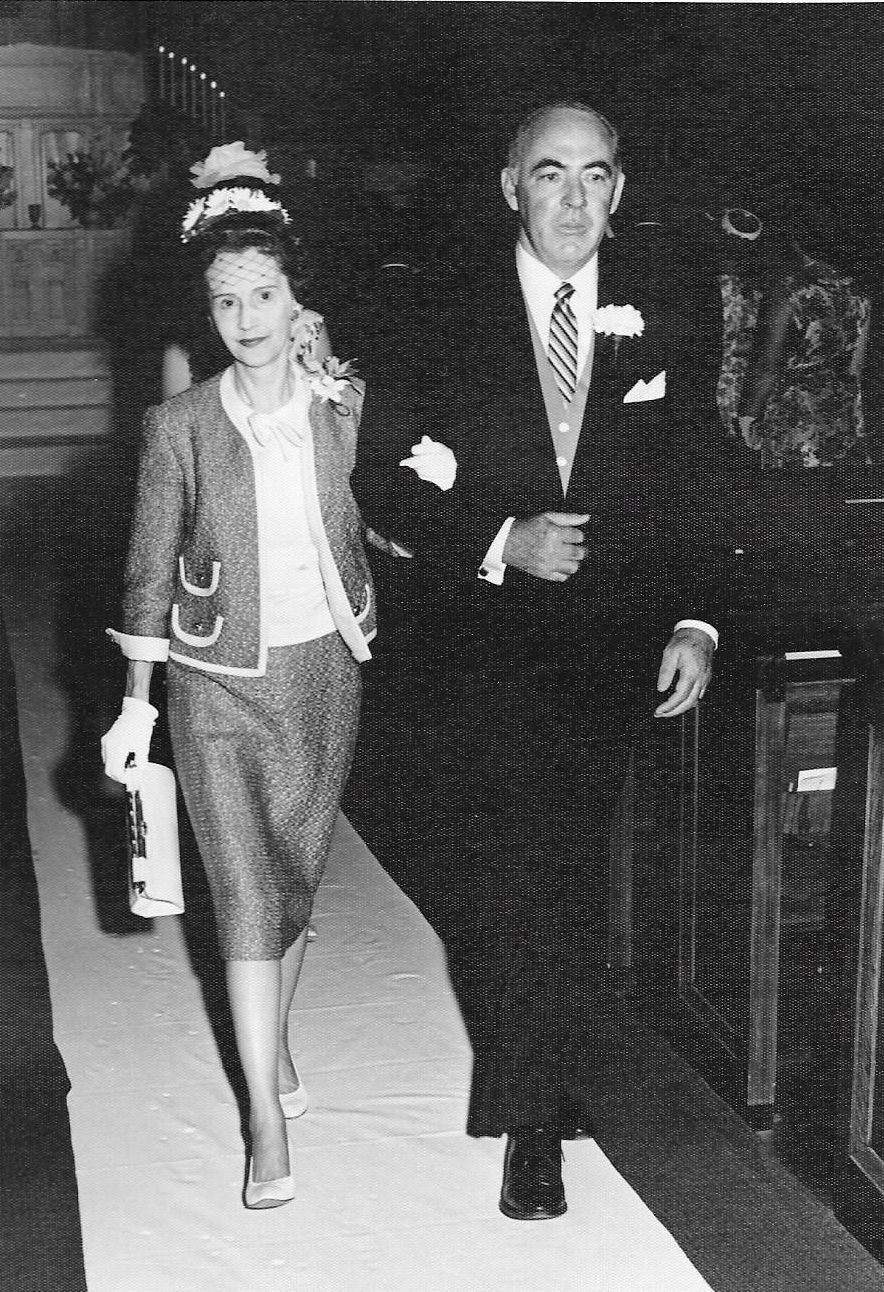 Elsie & Maurice at our wedding
Elsie & Maurice at our wedding
|
Elsie Alford Kittle - was Mike's maternal grandmother, the only grandparent he ever knew. A remarkable woman, she single-handedly raised Mike's mother, Elizabeth, while living in apartments in Chicago. Her husband, Roy Kittle, died in 1918: he volunteered as a nurse in that year's flu pandemic, catching the disease and dying two days later. Elizabeth was only 3, having almost no knowledge of her father. Elsie, her mother, and Elizabeth lived a hard life while Elizabeth grew up, and much of her early education was "home schooling" (Elsie's mother had great fear of sickness and insisted Elizabeth not attend school during the winter and spring seasons!). Elsie's household persevered, though, and she had menial jobs until her brothers gathered money to send her to business school. That enabled her to get jobs as a stenographer and executive secretary - which she did almost until her death in 1965. Mike was fond of his grandmother, and family visits to her apartment seemed "magical". She lived in a high-rise apartment on Chicago's north Lake Shore Drive, facing Lake Michidan...it almost seemed to touch the beach and lake!. It was far different from where Mike, his parents and his sisters lived; it was almost like going to an amusement park, with elevators, fantastic views, a fancy restaurant, and long hallways. Elsie was a fun hostess for these family times, and Mike never knew of her history and hard times. Elsie attended Mike and Libby's wedding in 1964, making it all that more special. She died a year later... |
Tomm Kleyensteuber - has the most wide-ranging relationship to Mike, as he worked with Mike both in Chicago and Phoenix. Tomm joined FEEC several years after Mike, and he also worked with him in a unique and important project there. When FEEC committed to changing computer vendors from IBM to GE/Honeywell, there was a large problem to be solved: conversion of existing applications to a new platform that couldn't run those programs directly (IBM was able to). This was considered in the decision, but some had to be done nevertheless, because reprogramming all those programs wasn't possible.
The technical effort to create a "program translator" wasn't available back then (1970), but an article in the Wall Street Journal gave Mike an idea: 2 young entrepenuers had actually done such a thing, and Mike thought he might try so himself! Very much a "pipe dream", designing and writing such a program for their specific conversion (IBM705-GE435) wasn't a project Mike's company wanted to actually do, but he was given permission to see what he could do. Tomm was assigned to help him, and they started...
It took months, and results weren't particularily encouraging at first. The task was to "de-assemble" the IBM programs' code and data structure (the IBM instruction set was small, only 26 instructions, but determining where the progreams' data and constants were in each program was a real challenge. The "target" source code was to be COBOL language, and the task was making propane gas from wood chips: seeming impossible. Eventually, though, some positive results started appearing - some very crude COBOL source code that, when compiled, actually ran on the GE computers and produced results.
The resultant programs were very slow, and this process, while successful in nature, wouldn't do for most of the high volume major applications. However, the conversion was viable for a number of the non-critical applications FEEC had (weekly, monthly and quarterly functions), and that gave FEEC significant relief in their overall schedule. The other programmers could focus their work on redesigning and reimplementing the most important programs to be converted, which they did. The "crazy project" Mike and Tomm did was a great help for the company's move to new computers. A further long-term benefit was that, once all the software source code was in a high-level language (COBOL), subsequent upgrades to new computer systems was immensely easier.
Then, several years after Mike had left FEEC and moved to Phoenix, Tomm did so himself. He contacted Mike and asked for a "good word", which he gave, and Tomm was ultimately hired and brought to Phoenix. Tomm didn't work with Mike, per se`, but had other assignments elsewhere in Honeywell's large operations. He eventually rose to a managerial position, and they had less and less contact. Tomm's wife was apparently unhappy living in Phoenix (reasons unknown), and one day he and his wife up and moved to Cincinati, Ohio. Mike hasn't heard from from them since.
|
Dr. Pam Klonoff was the manager of the Adult Day Hospital at the time Mike was being treated there, in 1978. She was Mike's primary neurological rehabilitation therapist and was directing his various treatments. Initially, he found most of the activities intimidating, and Pam was at first a little "scary". This was Mike's perception, because everything that was trown at him was very different and quite difficult. He didn't understand why he was there. Pam's therapy program was very thorough and often exhausting. The physical rehab sessions (with Heather Simpson) were painful, and Mike couldn't conain his screams and groaning. The neurological treatment sessions were confusing and difficult. Somehow, Mike endured almost 5 months of treatments, and eventually he understood their value by seeing objective improvements. In the end, Mike came to appreciate Pam Klonoff's work, as he recognized her care and its results in "putting him back together". |
 Pam Klonoff
Pam Klonoff
|
Erika (nèe Ricky) Koppitz - got Mike's attention almost as soon as he transferred to Libertyville High School: she was a 6 feet tall redhead. Mike dated her a bit in their Junior year, taking her to their Prom. Ricky is noteworthy because she was the first girl Mike kissed...
Ron Lentsch - upon starting at Honeywell on the WWMCCS project, Mike met and worked with a number of fellow employees, too many to mention (and recall) here. However, Ron Lentsch stands out for several reasons, and must be remembered here. First, he was part of the development group that Mike worked with, and in fact shared a cubicle with Mike and Reuben Muns.
Paul E. Luehr - was the FEEC's Vice President in charge of Data Processing (IT) during Mike's time there. This included the Systems Department, where Mike wound up after a few months in the Stockroom. Of course, Mike had no contact with or much knowledge of Paul Luehr for quite some time, other than to pass his office going to and from the Computer Room. It wasn't until Mike got involved with the technical aspects of new computers that Mike got to know Paul (other than once passing his office to hear the radio reports of President Kennedy's assassination in 1962). It was evident, though, that The Boss knew who Mike was.
It was around 1968 that Mike moved from only computer programming to working with the computers themselves, as FEEC grew and needed more processing power. Part of this new activity saw the company acquire several IBM 1401 computers, to be used as "satellite printers" (meaning they were not connected directly to the two IBM 705 computer systems that did all the computer processing there). Mike did the programming for the 1401 systems - a small programming effort - and helped establish new procedures for the Computer Room to use them. This got him the attention of other management, such as the punched card "tab shop", as well as the Computer Room managers - all of whom worked for Paul Luehr. Soon, Mike was consulting with these other managers, especially with the acquisition of even newer printers from a California company named Data Products, where Mike met and worked closely with Dick Peterson (invoking an interesting story itself).
It was this latter effort that Mike started working closely with Paul Luehr, as Mike had a key role in designing a special printer configuration for these new printers. Printer technology had advanced so that traditional software programming wasn't used: it was replaced with "firmware" (electronic programs), and Data Products had evolutionary "printer keys" that could be tailored to specific applications. These new features could make printing much faster, which for FEEC was a huge plus. To utilize this technology, the customer needed to determine the most and least-used characters to be printed, and Mike's assignment was to determine these parameters. With this information, Data Products would customize the printer hardware and firmware for each customer. Mike traveled to California for this work to lay out the detail specs. Paul Luehr noticed this.
Other research and planning work took Mike places away from FEEC, as the company grew and needed newer and more powerful computer resources. Mike was involved with it all, traveling with various IT managers. Paul Luehr accompanied Mike several times, especially when FEEC embarked on a major change from IBM systems to GE/Honeywell computers. By that time, Mike had been promoted to a new position, Manager of Technical Evaluation, and he had credibility with many FEEC managers and executives.
Ultimately, Mike was accepted into the "management ranks", including an invitation to a holiday party he and Libby attended at Paul's house.
George Mann - although not a personal friend, George Mann had an unique impact on Mike's life: he became a "catalyst" for many aspects of Mike's life in Phoenix. He was a manager at Honeywell, but Mike never worked for or with him. Mike decided to take a programming class at a local community college: George Mann happened to be the class's instructor. The subject was a computer language called Pascal, and Mike doesn't recall why he was interested in this language (it wasn't used anywhere at Honeywell-Bull). Mike found it to be an interesting language and did well in the class. He and George became well acquaintted during that semester.
Pascal is not a language for professional programmers, but it became popular with students and personal computer (PC) hobbiests in the late 1970s. Mike's interest in running put him in contact with some people involved with the sport (Rob Wallack, Felix Cichocki, and others). Untimately, his associations with Rob and Felix fostered a hobby which led to a second career that not only brought extra income but in many ways saved his professional and private lives. It all started with Mike's taking that Pascal Programming class from George Mann. Ultimately, his knowledge of Pascal led to the following experiences:
- Teaching Pascal Programming in a local college
- Creating a state-of-the-art system for timing & scoring of endurance sports (e.g. running, biking, swiming events)
- Becoming an well-known presence on the Internet
- Getting a new job after being laid off at Honeywell/Bull in 2000
- Having a challenging hobby for retirement
Bob & Mary Manning - lived next door to the house Mike and Libby bought when they moved to Phoenix. They were there for almost all of the 28 years Mike and Libby lived there, until Mary died shortly before Bob passed. The Mannings were older than the Copelands, and thir daughter, Michelle, babysat for them. Mary was a successful real estate agent; Bob seemed to be retired most of that time. Both were heavy smokers, and Mike found it curious that Bob could be seen in his back yard almost every day, smoking and drinking a glass of scotch.
Although close neighbors, Mike and Libby didn't see much of the Mannings socially.
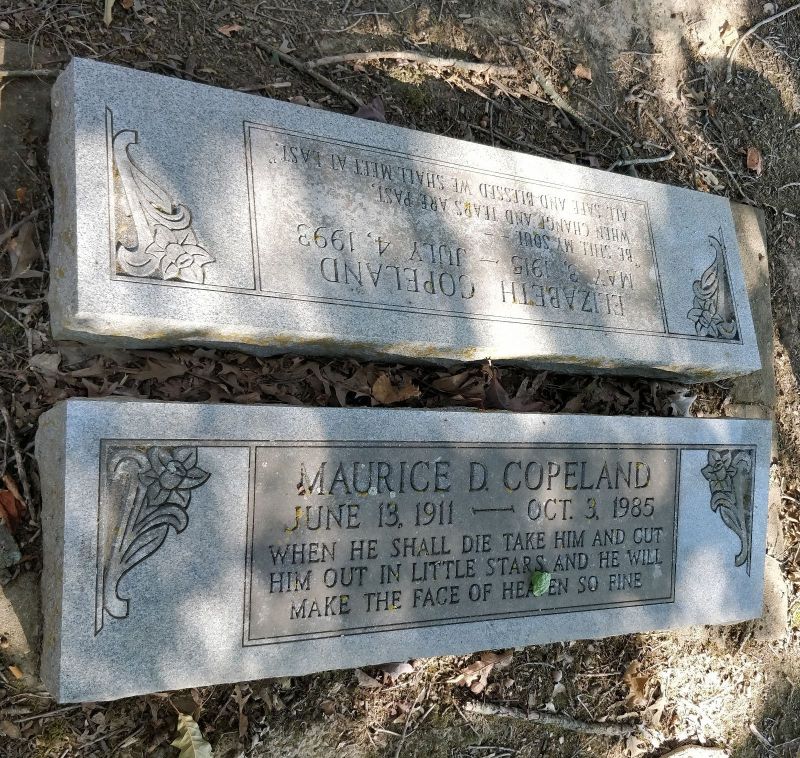 Maurice's & Elizabeth's Graves |
Mary's Chapel Cemetery (Rector, Arkansas) - is a private cemetery near Rector. Mike's parents, Maurice Copeland (born in Rector) and Elizabeth Copeland, are buried there. |
Art McCabe - played a most important role in Mike's life: He hired Mike and brought him to Phoenix! It was a involved and lengthy process that took 3 years to accomplish. Mike had been visiting the General Electric large scale computer facility in Phoenix for about 8 years, representing Field Enterprised Educational Corporation in its technical work with new computers. He met many marketing types from GE over the years, and his involvement with the GE 400 and GE 600 Series computer user groups often put him in contact with Ken Geiser, a customer relations manager there. Because of Mike's involvement with the User Groups, he also met Art McCabe, who was manager of various GE computer software systems. As much as anything else, these contacts were important when Mike sought employment with the GE in Phoenix.
In 1970, Mike first contacted Ken Geiser, with whom he had a good relationship, asking for advice on whom and how to get a job there. Ken told him that it was a particularly bad time to be doing that, as GE had just sold their computer business to Honeywell. He also said that hiring an important customer's (FEEC) employee (Mike) was a delicate situation (obviously...). Mike had to wait almost 3 years for things to "open up", and it was an interview with Art McCabe that actually produced a job opportunity.
Art's offer was to become a member of a small team of developers working on a highly secret U.S. military system called WWMCCS. Mike knew nothing about this project, of course, but he jumped at the chance to move to Phoenix and become only a developer (he had advanced at FEEC too far into management and was unhappy with that work). He flew to Phoenix with Libby, and they spent a few days looking to buy a house - which they did - and started the process of selling their home in Wilmette. A lot started happening very quickly, and both could see big changes ahead. Mike was needed almost immediately, and ss a moving date approached, Art arranged for Mike to stay in another manager's condo for 2 weeks prior to the family's actual move to Phoenix.
The WWMCCS team was located in an old wearhouse a mile away from the main GE/Honeywell plant, mostly due to security concerns and need to isolate the team from normal "plant activities" - a good thing. Their environment was austere for sure, but it afforded a great way to do nothing but work together, as well as learn the new team members who were coming on board (Mike among them). The project's scope and management grew as well, and Art was promoted to Director level. He brought in a manager from another GE/Honeywell project, Ken Roberts, to take over for him, and Art moved back to the main plant.
One of the people Art also brought into the team was a woman named Mary Maxine Williamson (generally known as "Mary Max"), with whom he had a personal interest. Although there may have a minor company policy violation with Mary's presence on the team, since Art wasn't her immediate boss, their relationship grew, and Art and Mary got married (Art's first wife had passed away). Their marriage lasted until Art passed away in 2003. (Mary passed away in 2007.)
Jerry McNeil - for most of the years Mike was associated with Raceplace Events Jerry was a fixture - as event announcer and humorist. Jerry had an abiding interest in the running sports and an almost encyclopedic knowledge of participants. Not restricting his interest to famous or professional athletes, he seemed to know most of the "regulars" who participated in local races. As a finishline announcer, he kept the spectators entertained with his frequent bon mots, sometimes arcane and understood only by Raceplace crew members.
Since Jerry usually traveled with the crew when working out-of-state venues, Jerry was fun to be around before and after the events they worked. He eventually moved to Minnesota, where he has written a book and continues to follow the running sports scene.
Mary Jo Meester - is a girl Mike briefly dated in his freshman year at Coe College. Mary Jo was a student at the nursing school that was across the street from his dormitory, but wasn't a Coe student. For a reason he can't recall, Mike visited the medical clinic in that school one evening, and Mary Jo was working there. She had red hair (!), and Mike somehow arranged a date with her. This "date" was to a college or fraternity function (he doesn't remember), and Mike learned an important fact of college life there.
Unknown to Mike was the "bad blood" that existed between the nursing students and the sorority girls at Coe (whatever the reason). A male Coe student who deigned to date a nursing student was "boycotted" by the sorority girls at Coe. It wasn't until "Flunk Day" that Spring that Mike was able to interact with a sorority girl (who turned out to be Janet White). That turned out to be an important "interaction" indeed!...
The Merchandise Mart - in Chicago, is the world's largest commercial building and wholesale design center. It encompasses 42 million square feet in 25 floors and span 2 square blocks on the north side of the Chicago River. The Mart was built in the 1930s by Marshall Field and Company, to become a major showroom and retailers' marketplace. Primarily filled with furniture and accessory showrooms, most floors (8-22) are closed to the public and accessible . During the Second World War, the Mart housed governemt offices, but in 1945 Joseph P. Kennedey (President Kennedy's father) purchaesd it and revived its original merchantile purpose.
The 1st 7 floors house a variety of commercial companies (the Chicago Transit Authority occupied the 7th floor for many years). Mike's first job, following his abbreviated college experience, was at Field Enterprises Educational Corporation (FEEC), which consumed the entire 5th floor and part of the 19th - a very large company. Conveniently, Mike could take "The El" (CTA commuter train) from his home in Evanston to a special stop that was part of the Mart. Many people got to and from the Mart via public transportation. Employees for Mart companies could occasionally visit the designer showrooms in the building an purchase furniture and designer items at wholesale prices, which was for some a nice "perk". Mike worked there for 13 years, before moving to Phoenix.
Reuben Muns - of all the people Mike has worked with throughout his career, Reuben Muns stands out as the most unique: genius-level, he truly was a giant in the computer industry. Mike happend to share small cubicle with him and two others (Ron Lentsch and Ron Cimino), and Reuben sat directly across from Mike. The small team had a table between their desks, and Mike and Reuben often worked facing each other across it. For seveal years, Mike had the benefit of Reuben's face-to-face tutelage...even though Reuben was a heavy smoker. (This was years ago, before many current laws were enacted.)
Nonetheless, Mike witnessed and helped to create the software component they dubbed, "The MunsMac Software Computer". This was, in essence, a software program that acted as though it was a (hardware) computer: having "created instructions" that would provide the functions needed for the Database Machine product they were building. To fulfill the specified functions in the WWMCCS specifications (there were 398 separate items), Reuben's idea was to create a "computer within the host computer" that would act like computer circuitry: hence, a "Database Machine" called MunsMac. In the early 1970s, this was a revolutionary concept, one which has also been used in some modern day computer languages, such as Java.
The team wasn't aware of the ground-breaking idea they were (creating), but it was they way they solved the enormous challenge of the WWMCCS requirements. Its "father" was Reuben Muns, and Mike was privileged to be a key part of its "birth".
Barney Nash - another fellow employee at Honeywell-Bull, was also one of Mike's managers there after Mike's devastating head injury in 1988. Barney didn't have a programming background, but he was an excellent, caring manager who worked hard to deal with Mike's situation. The work unit was diverse, having a mix of testers and other technical support people. The group worked well together, with much credit due to Barney's leadership and personality.
Although Barney wasn't Mike's last manager there (Andy Hertnecky was), there was a cohesiveness in that group that has lasted. For almost every year since they were together, they have met for a dinner party, usually after the Holidays. They used to go to someone's house (Mike & Libby hosted several), but now it's at a restaurant where they can reserve a private room. Unfortunately, the COVID 19 pandemic has interrupted this fun activity, and the next time is "in limbo"...
|
New Trier High School, located in Winnetka, Illinois, is one of the most famous high schools in the USA. Scenes from Home Alone, Ferris Bueller's Day Off, and Uncle Buck were shot at the high school's west campus in Northfield, and scenes from Sixteen Candles were shot outside the high school's east campus in Winnetka. The Breakfast Club's title comes from the nickname invented by students and staff for morning detention at New Trier, the school attended by the son of one of John Hughes' friends. The movie Mean Girls was based on New Trier. Risky Business was filmed in Winnetka, with scenes in and around the New Trier area. Many of New Trier's studenta and graduates are famous: movie stars, politicians, and business "giants". Mike attended this well known institution for 1½ years, when his family moved to Libertyville, Illinois. His sister Maureen attended it for less than a semester, but shared a "homeroom" with Ann-Margaret. |
 New Trier High School
New Trier High School
|
Shirley Ann Newman - was a girl Mike met while working at the Merchandise Mart: she worked for The Toni Company, a firm that produced a "home hair permanent kit" that was very popuar in the 60s & 70s. Toni became a division of Gillette in the 60s. The company's offices on the 3rd floor of the Mart housed their research lab, and employees there could get their hair done for free any time they wished. (Shirley had gorgeous hair.) She was also quite pretty, and they met at a "social mixer" that the Mart sponsored Friday evenings in a large banquet/ballroom facility in the building. Mike went there a few times to meet women, and while it wasn't a "meat market", as such, he met some women that way.
Mike dated Shirley for several months, through the holidays of 1961. He met her parents at her home, and when it came time to exchange Christmas gifts he ordered an expensive silk scarf from Neiman Marcus. Shirley was several years younger than Mike and clearly from a different background, living on the Chicago's West Side. Mike enjoyed being with her on dates, but when she mentioned that she had received a package from "Niman Marcus" (badly mispronouncing the first name), Mike was disappointed that she wasn't familiar with that store. (He sought to impress her with the source of the present, a gesture that fell flat.)
There wasn't much "romance" in their relationship, and when Mike left to go to Air National Guard Basic Training and Tech School (for almost 8 months), they wrote each other a few times. This correspondence was prefunctory and was withering when Mike received the "fateful greeting card" from Libby Payne. Mike stopped writing Shirley (never to see or hear from her again) and started the intense mail correspondence that ignited their romance. He didn't regard Shirley as a "romantic placeholder", but in fact that was her role at the time. To this day, Mike hopes the best for Shirley, because she was a nice person...
Anna Mayberry (nèe Noel) - tbd
| Don Papineau - was a fellow computer programmer at FEEC in Chicago. He was one of the four colleagues (Mike, Barry Sears and John Worthy) who went out to lunch every day. Don was quite witty and had a series on one-liners and acronyms that kept them all laughing. Many, if not all, of Don's quips (PDA, BFOG, OPL, etc.) would today be classified as very "non-PC", but they were right for this group. Over the years at FEEC, Don and Barry became close personal friends, vacationing in Indiana together and finally driving to Phoenix to attend Regan's wedding in 1984. That occasion was the last time Mike and Libby saw Don, as he died in July, 2004. He is still remembered with great fondness by many... |
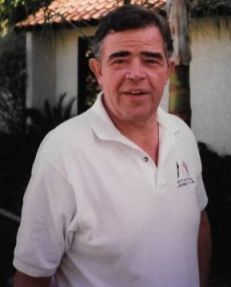 Don Papineau
Don Papineau
|
Gordon & Emma Read Payne - tbd
Vicki Peake - was the girl who cut Mike's hair for several years after Mike and Libby moved to Phoenix. More accurately, she owned and ran a hair salon near their first home in north Phoenix. After trying several barbers, Mike somehow wound up in Vicki's shop - he doesn't remember how or why. He patronized her for quite a few years, up until his bicycle accident/head injury. Libby knew this, of course, and when Mike had been in the hospital for several weeks, he became rather "scruffy" and needed a haircut: she contacted Vicki and arranged for her to visit his hospital room and cut his hair. This was an major surprise for Mike and had a nice impact on his recovery.
Gary & Patricia Peshak (nèe Simmons)- tbd
Phoenix College - is a local community college with importance to most of the Copeland family.
First, Mike took several classes and ultimately became a parttime instructor there.
Deciding to learn a new programming language (called Pascal), he found a real interest in it and soon became its instructor when his teacher (and fellow Honeywell employee) opted out.
Mike taught the class for several years, until his bike accident and head injury became too much of a physical challenge.
Libby also taught there for several years, in the Interior Design program, providing students with an exceptional level of experience and knowledge.
Also, Regan took some of necessary classes in her pursuit of her Teaching degree that she got from Arizona State University.
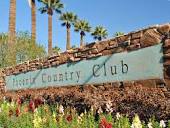 Phoenix Country Club
Phoenix Country Club
|
Phoenix Country Club is the oldest country club in Phoenix - Libby and Mike were members there from 2001-2011. Libby thought joining this club, in downtown Phoenix, could be a benefit to her business, and they were then living within walking distance of the club when the moved to the high rise condos they lived in during that period. PCC was and is primarily a golf club, and although there are tennis courts, a swimming pool, and workout facilities and classes, Mike and Libby didn't get much use of the club facilities. Mike took up tennis, after many years' hiatus. Libby also played a little tennis, too, but it was confined to clinics at night, as she was working 7 days a week to keep her business going. Mike's tennis (and that's all he did) was with a men's Saturday group, some inter-club play, and 2 years of USTA play, representing the club. He also played in several "club championship" tournaments, winning the 65+ Mens class and becoming Club Champion in that division. (Full disclosure: that year, only one other man entered that division, a man 84 years old, and Mike didn't have much trouble winning that match...) In summary, the "country club experience" didn't help Libby's business much, and it primarily became a vehicle for Mike's recreation and friendship acquisition. Neither Mike or Libby made any friendships that lasted beyond their membership there. |
David Porter - was a childhood friend of Mike's when he was living in Wilmette. He happened to live behind the tennis courts at Vattman Park, and Mike met him while playing/practicing the sport (Mike had taken city-sponsored lessons with his sister, Maureen). Dave was a year older than Mike and was learning the sport, too. They developed a sort of "mutual improvement" activity during the summer.
As they were spending a lot of time on the courts, they met other players of all abilities. Some were better, but allowed the boys to play with them - helping both improve their games. Among the people who showed up to play was a young girl named Ann-Margaret Olsson...who would become the famous entertainer and movie star. She had recently moved into the neighborhood with her mother and was looking for nearby summer activities. When she asked for help in learning tennis, Mike and Dave were happy to oblige! This scenario lasted for only a few weeks and has been forgotten by all but Mike.
Dave and Mike did other things, as well, over several years. They threw footballs and baseballs over at the attached park, and they competed with each other by kicking, throwing and catching footballs - a new sport for Mike. After a while, Mike got fairly good at kicking, which helped him in later years. He also spent time with Dave and his family, as they lived adjacent to the park and the courts. The friendship changed when Dave started high school (New Trier): he "moved on" to other pursuits.
Dr. George Prigatano - was Mike's primary psychologist/therapist at the Adult Day Hospital, (part of Barrow Neurological Institute), where Mike spent about 6 months of neurological rehab that followed his bike accident/head injury in 1988.
Bev Quidort - was a girl Mike met while running on the canal banks near his home - back when he was running/jogging for fitness. It was a casual friendship of the type where people sharing a common interest sometimes introduce themselves. Mike would see her and another girl friend of hers almost every day, and eventually he had a conversation about their common activity. Bev mentioned where she lived and why she ran in that area. The frequency of contact eventually led her to invite Mike and Libby to her house for dinner, where they met her husband, Phil. The couples' relationship stopped when either Bev or Mike (he doesn't remember which) gave up running.
Many years later, Mike and Libby were invited to a small party at the home of their old neighbors, Jan and Nita Keiser. The occasion was to "show off" the results of a large renovation the Keisers did on their home, which Libby oversaw in the design and planning. It was interesting for Mike to see the completed project about which Libby had been telling him during its development (he doesn't often see her work), but there was a major surprise for him when he was introduced to another quest: Bev Quidort! She was a friend of the Keisers (Mike doesn't recall how), and Mike reminisced about their long-forgotten running days. You never know...
Ralph Rabin, DPM - and his wife, Sandy, were neighbors from their first Phoenix home, on Echo Lane. Ralph had a strong personality, and always had knowledge regarding whatever issues other neighbors had - many called him "the Maven". He was a podiatrist, and Mike used his services on occasion.
Regency House - tbd
Cindy Radke - is the wife (Terry Eckhardt is her husband) of a couple that Mike and Libby met while living in the Regency House. Meeting in a humorous way on the elevator (Mike was going up with what was obviously party stuff), Terry asked why he and Cindy weren't invited (to the party). This led to a short, silly conversation about Terry and Cindy being new residents, didn't know anybody, and felt "excluded" from social activities in the building. Mike felt compelled to meet them more directly, doing did so soon thereafter.
When Mike and Libby got to know this couple, they found a lot in common, and the friendship grew. At that time, Libby and Mike lived 6 floors below Cindy and Terry, and once Terry was shaking a dust mop over the railing, and it fell off and landed on the flag pole on Mike and Libby's balcony. More silly fun with the two couples when Terry came down and announced their flag pole had damaged his dust mop...
Terry worked as a lawyer for the county, and Cindy worked for Cisco; they were recently married. Although both couples have moved (Cindy and Terry now live in Flagstaff), they see each other now and then: the latter come to Phoenix often; Libby and Mike have gone to Flagstaff a few times to escape the summer heat in Phoenix.
Ken Roberts - was one of Mike's most notable bosses at Honeywell, in Phoenix.
He took over from Mike's first manager/boss,
Art McCabe, when Art was promoted into another area of the Phoenix company.
A soft-spoken man, Ken came from a programming backgound, and his management style was laissez-faire: he let his people operate with little supervision, only wanting to know of problems.
Ken almost seemed reluctant to interact much with his people...to the point that he had Mike often do his potential employee interviews.
Mike doesn't recall how many years he worked for Ken, but to Mike it was "all good". Ken and his wife, Sue, retired to Florida, and he maintained contact with Mike for several years via hand-written letters.
Harold J. Rourke - (Hal Rourke) was Mike's first manager when he transferred from the FEEC Stockroom to the Systems Department. He hired Mike to become the department's clerk, and he offered him the chance to take s IBM Programmer's Test that led to his 50 year career as a computer programmer. Mike recalls that Hal was forgiving when Mike dropped a computer tape during a session of rental time on another company's system that FEEC was using to process work that exceeded their resources. (This was one of the tasks Mike had during his early days in Systems.)
In those days, a computer tape was an important resource and quite expensive. Mike was sure he'd be fired, since the rental session was ruined. His new boss was most understnding, and showed great compassion by not terminating him.
Hal Rourke didn't remain as Mike's boss for long, and he left FEEC. Regrettably, Mike hasn't any knowledge of what happened to his first career manager.
Mariam Sanford - was another of Mike's managers at Honeywell, then Honeywell/Bull.
Following his devastating head injury in 1988, Mike went back to work, not as a computer programmer, but tester of the company's software products.
It was a serious reduction in his responsibilities, but Mike was most pleased to return to work after his 6 months of recovery and rehabilitation.
He also didn't yet have a full understanding of injury, and the work was, in fact, difficult for him.
He knew Mariam well, as she had been a programmer at Honeywell for years, and they had worked together in some projects.
She was easy to work with, and her weekly meetings were well-structured and light-hearted.
Mike knew most of the others in her group, too, so the transition was fairly easy.
Also, Mariam was married to another programmer, Ralph Lewis, with whom Mike had worked in past years.
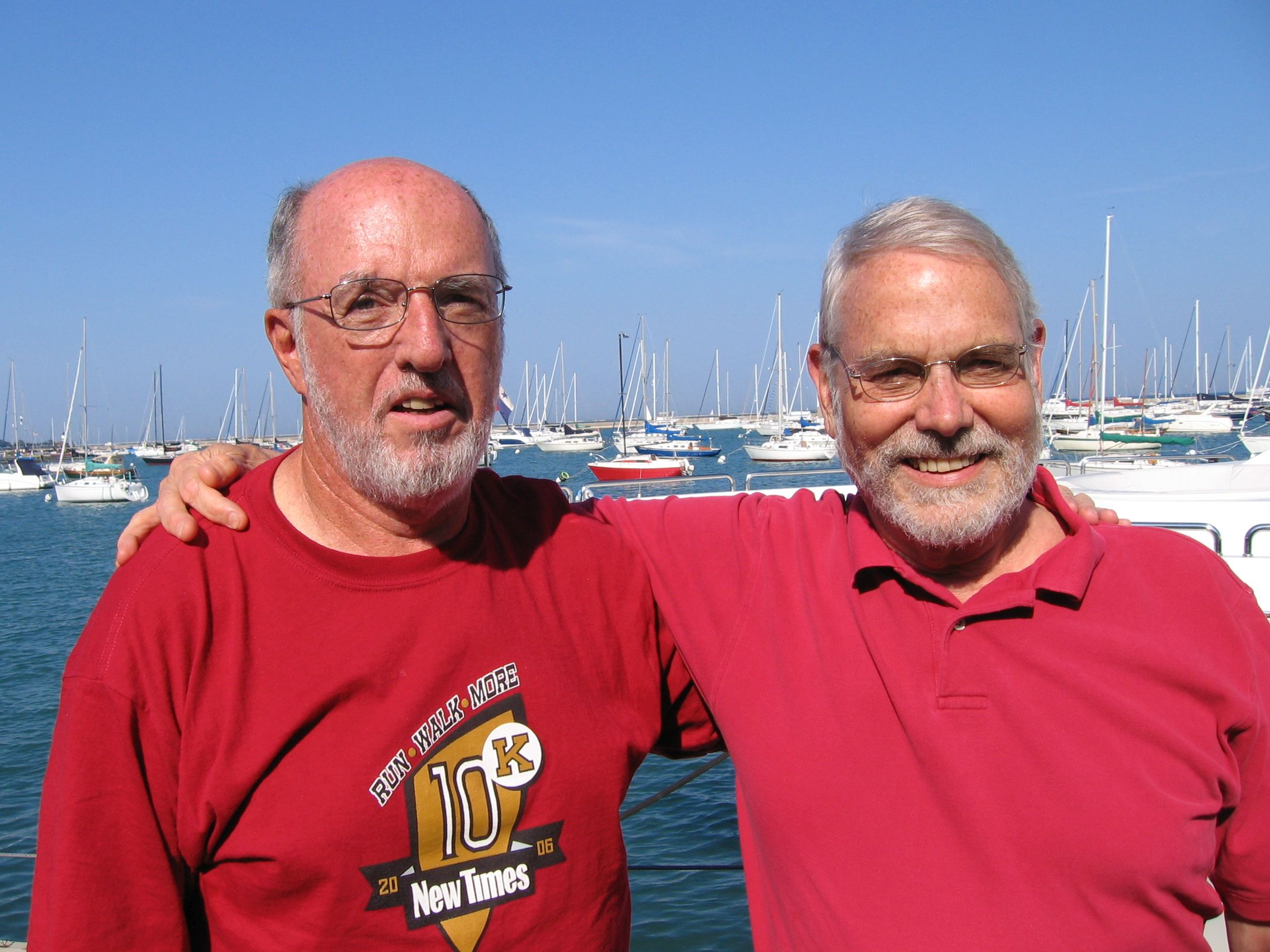 Mike & Barry Sears
Mike & Barry Sears
|
Barry Sears - one of Mike's best friends in Chicago, worked with him at FEEC. He was part of a group of 4 fellow workers: Mike, Don Papineau and John Worthy. The three others joined FEEC after Mike: Barry was the first, being hired a a new programmer trainee (back then, there were no Computer Programming college programs; almost everyone entered the field via "OJT"). Barry was an Ivy League college grad (BROWN), and he and Mike became "lunch buddies": they usually went off site to some restaurant in walking distance...but sometimes taking a taxi. After Don and John came into they department, they joined Barry and Mike in their "lunch ventures". Of the four, only Mike and Barry maintain contact today, as Don died a few years ago and John developed political leanings that Mike and Barry didn't share. |
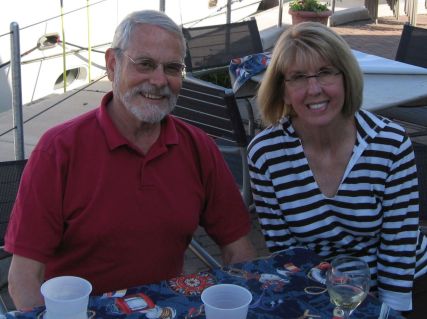 Barry Sears & Libby
Barry Sears & Libby
|
|
Myron Shapiro - was a very close friend of Mike and Libby, sharing a great interest in tennis. He and his first wife, Connie, became friends when they joined Top Seed Tennis Club in 1978, along with many other couples interested in the burgeoning sport. The Shapiros lived in Moon Valley, just a couple miles from the new club. They had no children, and Mike and Libby saw Myron and Connie almost every time they went to Top Seed. Myron was a well-known lawyer in Phoenix, eventually becoming a Superior Court judge. The Shapiros ventured into parenthood well into their marriage, mostly because Myron wanted children. They arranged through a good friend (Neal Berger) to adopt a child, a girl they named Jamie. Connie wasn't as committed as Myron, and Jamie, who had emotional problems, faired poorly: she had emotional issues and was difficult to control. The experience caused a disintegration of the marriage, and Myron and Connie divorced. An attempt at "shared custody" didn't work. |
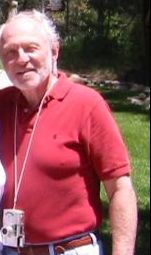 Myron Shapiro
Myron Shapiro
|
Janet Shepard - tbd
|
Don "Cowboy" Shourds - is one of the "Drop Ins" tennis/coffee group that Mike plays with twice a week. Don is significant because he manages the group: reserving the courts, handling the money, providing new tennis balls each day and generally "runs" the activity. And, yes, he (always) wears a cowboy hat....
|
 "The Cowboy"
"The Cowboy"
|
Heather Simpson - following Mike's awful bike accident in 1988, he spent a month in inpatient care at a hospital and almost 6 months in neurological rehabilitation at Barrow Neurological Institute. He received various kinds of therapy there, among them was a program of Physical Rehab. Heather was his therapist for this; she pushed Mike through hours of "pain and suffering" (for him) that worked well: he was able to resume most normal activities without difficulty upon finishing the BNI programs. She often produced loud cries of pain and discomfort from Mike which everyone there heard. To this day, Mike remembers her work and is grateful for it.
Sky Harbor International Airport - tbd
Ann Spoelstra - was a girl Mike dated in 1960 after he started his computer programming career at Field Enterprises. She was attractive, classy, and pleasant company, but Mike knew there was no future with her, as she was a Catholic. They had only 3 or 4 dates, which were important because she introduced Mike to the world of "fine dining". That is, Mike quickly understood that Ann knew how to behave in nice restaurants, knowledge Mike didn't have but sensed he should acquire. Mike knew he needed to know how to execute the basics of wine ordering and such, so he without regret "wrote off" these expensive dates as a valuable learning exercise.
|
Squash - was a wonderful dog that Regan and her husband, Don, got early in their marriage. Squash was a Pug puppy, which fitted into Don's penchant for acquiring somewhat odd animal pets. She was, however, a most loveable animal, with enormous personality and cuteness. When Regan and Don's marriage broke up and Regan moved back to Phoenix, her one desire, above all else, was keeping Squash. Mike and Libby drove to California to bring Regan home, and at that time fell in love with Squash, too. Regan got an apartment fairly close to Mike and Libby's home, and whenever Regan visited Squash was invited. Some time later, Regan decided she couldn't care for Squash as needed, so Mike and Libby "inherited" Squash, becoming a joy in their lives. While living with Mike and Libby, Squash developed a problem with her spine and soon wasn't able to walk on all fours. It was heart-breaking to see her struggle so, and they spent a lot of money on a surgery that didn't work. Squash gamely dragged her body around their house... Eventually, Regan and her parents concluded Squash's quality of life was so poor, so they agreed it was time: they made arrangements to have Sqaush's vet end it all. When the time came, Regan and Mike took her to the vet (Libby couldn't handle doing it...) Regan and Mike cried buckets as Squash fell into a permanent sleep, and Mike regards it as the toughest thing he's ever had to do...and it's why Mike and Libby can't face getting another dog, knowing the likelihood of doing it again. |
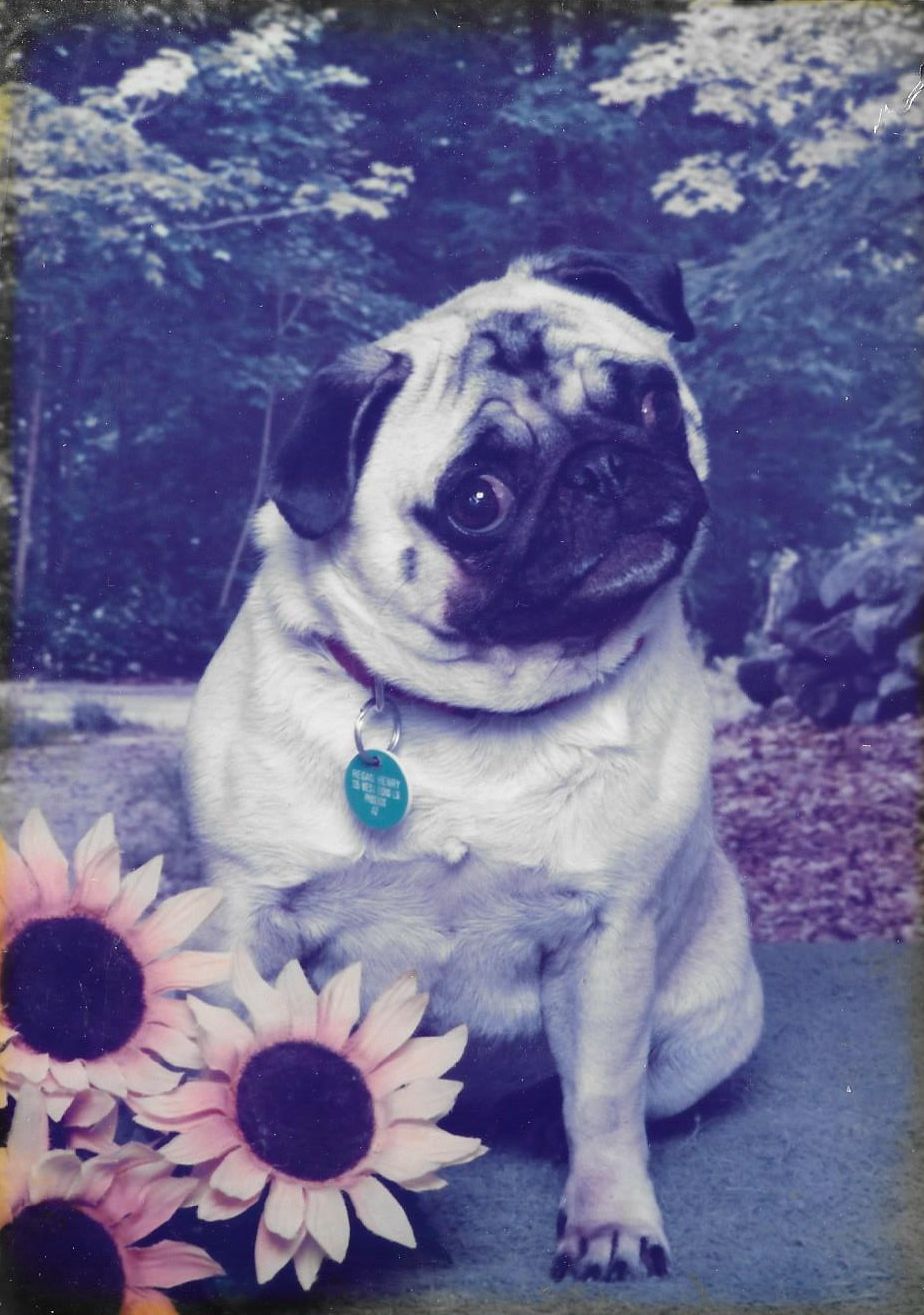 Squash, everyone's favorite dog
Squash, everyone's favorite dog
|
Lolita Tarver - was the "target" of a shooting in The offics of Field Enterprises. It was one of the most bizarre situations Mike ever faced in his career (there or anywhere else). Mike was managing 2 programmers, but he also had a small clerical staff that served the entire Systems Department. Several of these cherical people were Afro-Americans women, and Mike didn't know much about them. Late one day, he heard an argument between two of them, but it seemed to resolve itself before everyone left for the day.
One of these women, Lolita Tarver apparently was the object of the argument, and early the next morning became the target of a gunshot the following morning. The shooter, Dorothy Thompson, another clerk working for Mike, had let the dispute fester overnight and came into work early, waiting for Lolita. She had sat at her work station, still wearing her winter coat, and when Lolita entered pulled out a Derringer-type pistol and shot at Lolita. This, of course, caused an uproar among those there, and Dorothy calmly go up and walked out. No one stopped her...
Mike arrived a few minutes later, to find the place in chaos, not knowing quite what had happened. Someone called the police, who arrived soon and started to gather information and evidence (the bullet was lodged high in a wall, making it clear that the shot was wildly off). The interviewed Mike, who knew little, even what had led up to the shooting incident. The police did get Dorothy's information and address and went off to locate her.
Some time later, after the police had apprehended Dorothy Thompson, she went to trial for the assault, and Mike had to go to court and testify what little he knew. She was apparently convicted, never came back, and Mike doesn't know what happened to her. A strange incident, for sure, which taught Mike that "personnel issues" weren't his forte` - an important lesson for him.
Dorothy Thompson - see Lolita Tarver (above)
Top Seed Tennis Club - 5 years after settling in Phoenix (in 1978), Mike and Libby were swept up by the "Tennis Boom" and became charter members of this club. They had played occasionally at a local park in Evanston, where Libby was just learning the sport, and she had started to play with some ladies at the Phoenix Tennis Center, an old, established city facility in central Phoenix. Mike was playing some tennis for the Honeywell/Bull tennis team; Libby's tennis was completely separate. She developed some female friendships at PTC, and Mike only heard about her new friends.
It was at PTC that Libby heard about a new tennis club being built in north Phoenix, and she convinced Mike to look at this club because she knew that many young people were joining Top Seed. The new club was drawing many couples their age, and Libby saw it as both a social and recreational opportunity for them: the club soon had ~1200 members (at that time the largest tennis club in the Southwest). It had 36 courts, a restaurant and bar, and fast becoming "the" place to be... They soon became very involved in Top Seed life, taking lessons, playing in various informal groups, and entering tournaments there. However, over several years at Top Seed, they saw numerous marriages break up, affairs and conflicts (probably) induced by the sometimes intense competitive atmosphere, and occasional broken friendships. It was eye-opening for the Copelands.
Mike and Libby also played on "club competition" teams against other clubs around the Valley. This latter experience taught them about the serious aspect of tennis, as they found other, more established clubs used "ringers" and "sand-bagging" to aid their clubs. Even though Mike had played serious tennis in high school and college, this interclub competition soiled his interest in the sport. Mike and Libby were playing tennis almost every day, and it took very their lives...intrusively so.
Mike didn't like how tennis was affecting him, as he wasn't playing as well as he wanted (he insists it wasn't about "winning", but "not playing well" in a sport he's played most of his life). He sought to improve himself by running, meaning to increase fitness and leg strength. This change didn't work as hoped, but instead created an interest in a different sport, changing his life dramatically. Mike didn't play tennis again for more than 20 years, and Libby gave it up for other reasons, too.
Meanwhile, Top Seed Tennis Club was swallowed up by the Phoenix's ever-expanding growth and is now completely gone.
Tony Traynor - was Mike's Stockroom supervisor at Field Enterprises Educational Corporation (FEEC). For the 4-5 months that Mike worked there (before transferring to the Systems Department), Tony taught Mike the basics of repacking returned sets of Worldbook Enclopedia before shipping them out to new customers. An opportunity to do a different sort of activity - delivering incoming packages throughout the company - led to exposure for Mike...which led to an offer to do clerking work in the computer programming department. The obvious benefit then led to a chance to learn computer programming there, eventually developing Mike's 50-year career in a field few people knew existed. Tony Traynor clearly made that happen.
Bill & Birgit Werth - are old friends of Mike & Libby from Evanston. The relationship is interesting because Libby knew Bill before meeting and marrying Mike, and both knew Bill prior to his meeting/marriage to Birgit. Bill was a friend of both Art Harris and Frank Haynes during the time Libby was dating Art...and Libby met Bill and Frank that way. Birgit was living in Denmark, and Bill met and married Birgit in ways neither Copeland remembers. She formed a small group of other Danish girls, and Libby & Mike eventually became a part of a married couples group they called "the Danish girls". Child births occurred over time, and the families spent holiday and other times for years until Mike & Libby moved to Phoenix. The Werths and Copelands have exchanged Christmas greetings for many years since: Birgit has been a wonderful note-writer.
Todd Wilcox, MD - has been a client of Libby's for many years - one of her best. He lives in Salt Lake City, Utah, but his work takes him all over the country. A number of years ago Todd took a contract job in Phoenix to manage the Maricopa County Jail's medical system. This enormous hospital and healthcare system has been run by (the nortoroous) Joe Arpiao, famous for his "Tent City" jail and periodic immanent roundups. The whole system was in need of major overehauls, and Todd was commissioned to find the problems and fix them.
For a while, Dr. Wilcox commuted back and forth from home to Phoenix, but he decided to purchase a permanent residence because he needed to be in Phoenix more and more of the time. He found a newly constructed loft in midtown Phoenix, but it was starkly new and unfurnished. A recommendation steered him to Libby, who had recently moved to a formal design studio not far from his new residence. After some initial planning, he gave Libby "free reign" on this project, turning it into a stunning loft residence. Among the features was a 12 foot metal sculpture that was created by a local artist, Jay Willet (a personal friend).
This project turned out so well that Libby asked if she could have it photographed for submission to the ASID Design Awards - which it won 1st Place in its category. The success of this project fostered a long relationship with Dr. Wilcox, extending to major work on his home in Salt Lake City. This latter project is complete, and Todd has sold the loft in Phoenix, but they remain good friends to this day. The special client relationship with Dr. Wilcox reaped an extraordinary benefit when Libby and Mike neared their 50th Anniversary.
Todd vacations in Hawaii often, and is well known there at a particular resort. Libby once mentioned to him that she and Mike had really enjoyed their Hawaiian cruise on their 25th anniversary and thought they might go back to their favorite island, Kauai. This is the island Dr. Wilcox frequently visits, and he offered to help Libby and Mike find good accommodations at his favorite resort.
They started looking into this resort, but because of their financial situation felt they couldn't afford to fly and stay there. When Todd asked how their plans were going, she said they couldn't make this trip at that time. That's when he said that he wanted their 50th Anniversary to be something "special"...and he offered to pay for their stay there (via accrued points) if they could get there and back. When Libby came home from one of her many trips to Salt Lake City - working on his residence there - she told Mike of Todd's offer. Mike broke into tears (a somewhat common emotional reaction, following his Head Injury): he didn't know how to "process" such an extraordinary offer.
They did in fact accept this incredible offer, travelng there on their 50th Anniversary. In summary, this incident not only shows what a special client/friend Todd Wilcox has become, but also demonstrates the way Libby works with her clients, going well beyond the simple "client-vendor" relationships.
Don Williams - worked at Honeywell-Bull during Mike's time there. Mike new Don casually at first, but became under his tutelage when Mike became involved with personal computers. Don's job at Honeywell-Bull was different than most developers, for he assumed a "guru" role that wasn't part of the company's product work. He was mostly "on his own" to investigate and support various PC ideas.
Mike was an early user of some PC systems, starting with user terminals that were powered by early models of PCs, but he wanted to see what the PC engines could do beyond being a "smart terminal". He learned that Don Williams was a great source of Personal Computer tips and techniques, and Mike took good advantage of Don's knowledge. Don seemed to work on this stuff 24/7, and there was no end to what Mike could learn...even though some of it went beyond Mike's actualy assignments at Honey-Bull. Mike's interest in PCs was piqued more and more, leading to his teaching college and working with Rob Wallack and his Raceplace timing & scoring activities. In his opinion, Don Williams held the role of "giant" in the ever-developing world of personal computing.
Wilmette Congregational Church (FCCW) - holds several important moments for Mike and Libby. First, it was there Mike first experienced church activities of note; he went to services and Sunday School there (from age 10 on), and where he met his first "girl friend": Karen Swanson. Actually, they merely established a "common bond" throughout years of school and college that was never serious, but for Mike built a continunity through his many moves.
A second, ironic connection to FCCW for Mike, Karen (and Libby) became evident when he learned that Karen and her husband Herb were married in 1962 there, by the resident minister, Buckner Coe. That was where Mike and Libby were married, in 1963...by the same minister!
Bill Wilton - owned and operated the Sinclair Oil gas station close to Mike's Wilmette home. He let Mike hang out there, and Mike learned some basic car maintenance activities, as well as how to deal with customers: valuable experience that would pay off when Mike went to college. That experience was enough to get Mike a part time job an a nearby Gulf Oil gas station, where he ran the station on weekends. The money he earned postponed for months the inevitable leaving Coe College, and it taught Mike some valuable lessons.
World Book Encyclopedia - was the education product produced by Field Enterprises Educational Corporation (FEEC). At the time Mike worked there, it was by far the largest-selling Encyclopedia in the world.
Frank Winters - was a Vice President of Clissold Publishing in Chicago At the time Mike met Libby, she was Winters' personal secretary. After her marriage, she continued working for him until she became pregnant with the twins.
|
John Worthy - was the last of the FEEC "lunch group" (Mike, Barry Sears and Don Papineau) to join them as computer programmers. He had started at FEEC a couple of years earlier, as a computer operator. Mike's programming tasks frequently took him into the computer room, where he noticed that John was very smart and attentive: he stood out from the other operators. From conversations Mike had with John, he found out John was a good basketball player. Mike was playing in a YMCA league in Evanston, and he invited John to try out with the team. John was indeed good, and his joining the team immediately improved it. Mike also saw John's interest in the programming work at FEEC, and he helped John get transferred to the Systems Department. John had an aptitude for programming and soon became an important member of the staff. (An Afro-American, John also benefitted from a new program at FEEC to hire minorities: he was in a good place at the right time.) |
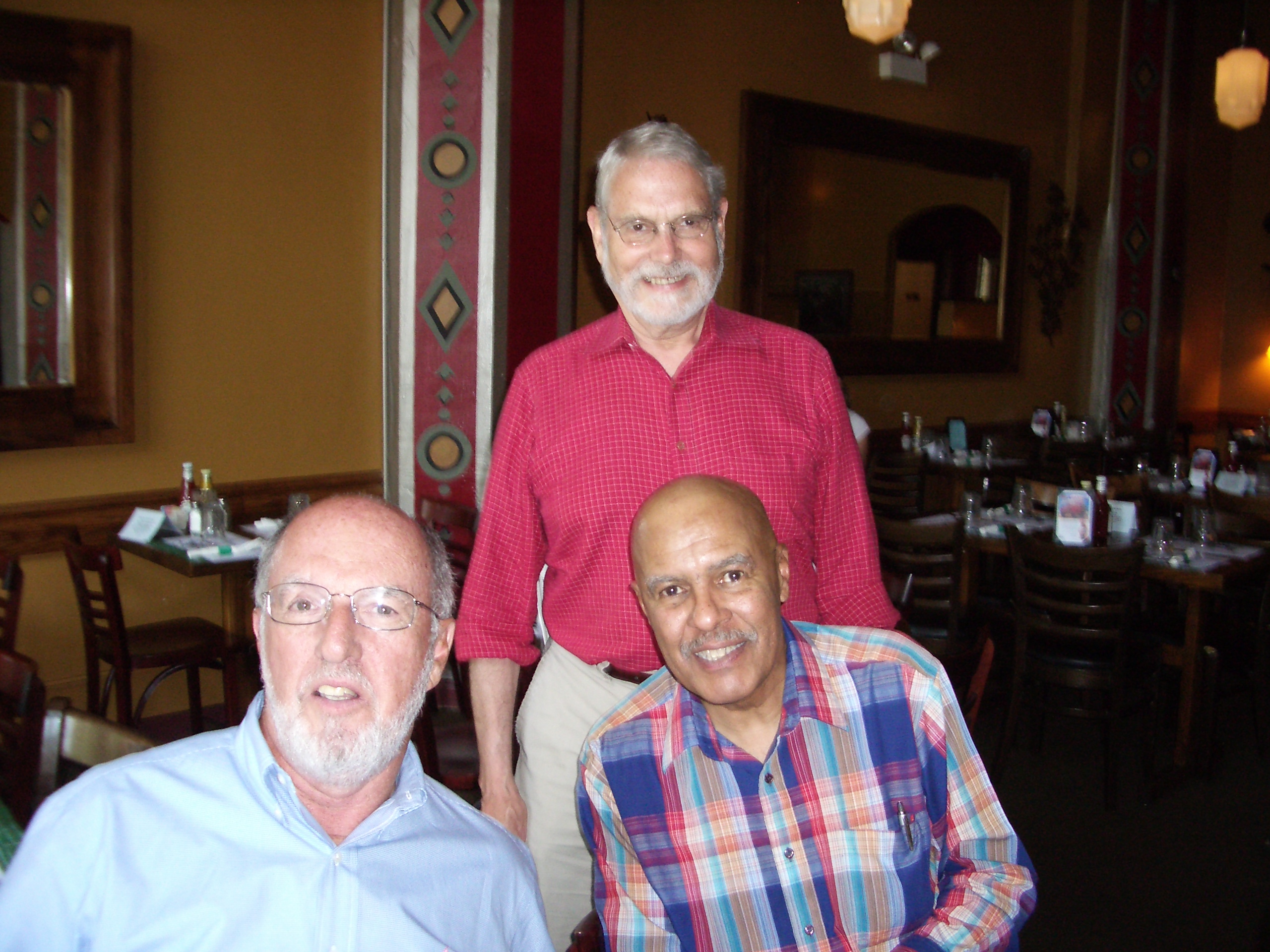 Mike, Barry & John Worthy
Mike, Barry & John Worthy
|
|
Dan & Pepper Wright - Mike would at times participate in a tennis clinic at the Phoenix Tennis Center, where he met Dan. A good player, he asked about playing opportunities there; Mike suggested his "drop-in" group, where he fit in nicely. He was still working, and he didn't play with Mike's group a lot, but he joined the guys at coffee when he did. One day, he mentioned that he was getting married...which was an unusual situation in that group - to a woman named "Pepper". She, too, was a tennis player (a good one) and has played with the guys on occasion. In a casual conversation with Dan, Mike learned that Dan and Pepper are neighbors, living in the Biltmore community next to the Copelands. This led to some social contacts with the Wrights: casual tennis on their court and some dinners. Dan also once invited Mike to play on his court with his cousin and one of the drop-in guys. It turned out to be very good tennis for all... |
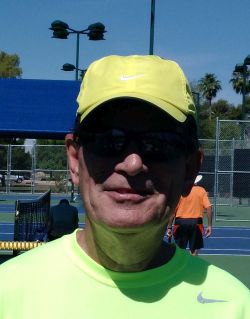 Dan Wright
Dan Wright
|
Jim ("Fat Cat") Yayman - was a high school friend of Libby's. He was a bit of a "hot-rodder" and was interested in fast cars and "being cool".
Tony Zigrossi - was a fellow computer programmer working at Honeywell-Bull, etc. Although he and Mike worked in different software areas, they knew each other from outside activities: tennis and running. The both played on a short-lived Honeywell Tennis Team, playing against employees of nearby companies. After that activity wained and when Mike took up running, Tony joined Mike in training runs and various organized runs (10Ks, marathons, etc.).
Mary Zornow - played a small, but important, role in the Copeland's move to Phoenix. When Mike went through the process of being hired by Honeywell in 1973, Mary was the HR manager Mike dealt with there. Although he knew various GE/Honeywell managers, he didn't know much about housing and temporary living accomodations he needed when he had to start working there before the family joined him. His new employer paid for a visit to find and buy a home there (which worked better than he had imagined), but he also needed a place to stay for 2 weeks before they drove there from Evanston.
Mary Zornow put them in contact with a really good realtor, and since she had recently gotten married, had an unused townhouse she let Mike use without cost! Her place had a private pool and was fully equipped for Mike's use. It was close to the Honeywell facility where he would work and generally a perfect situation for him.
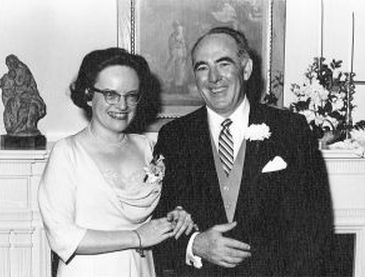
 Navarre's Restaurant
Navarre's Restaurant